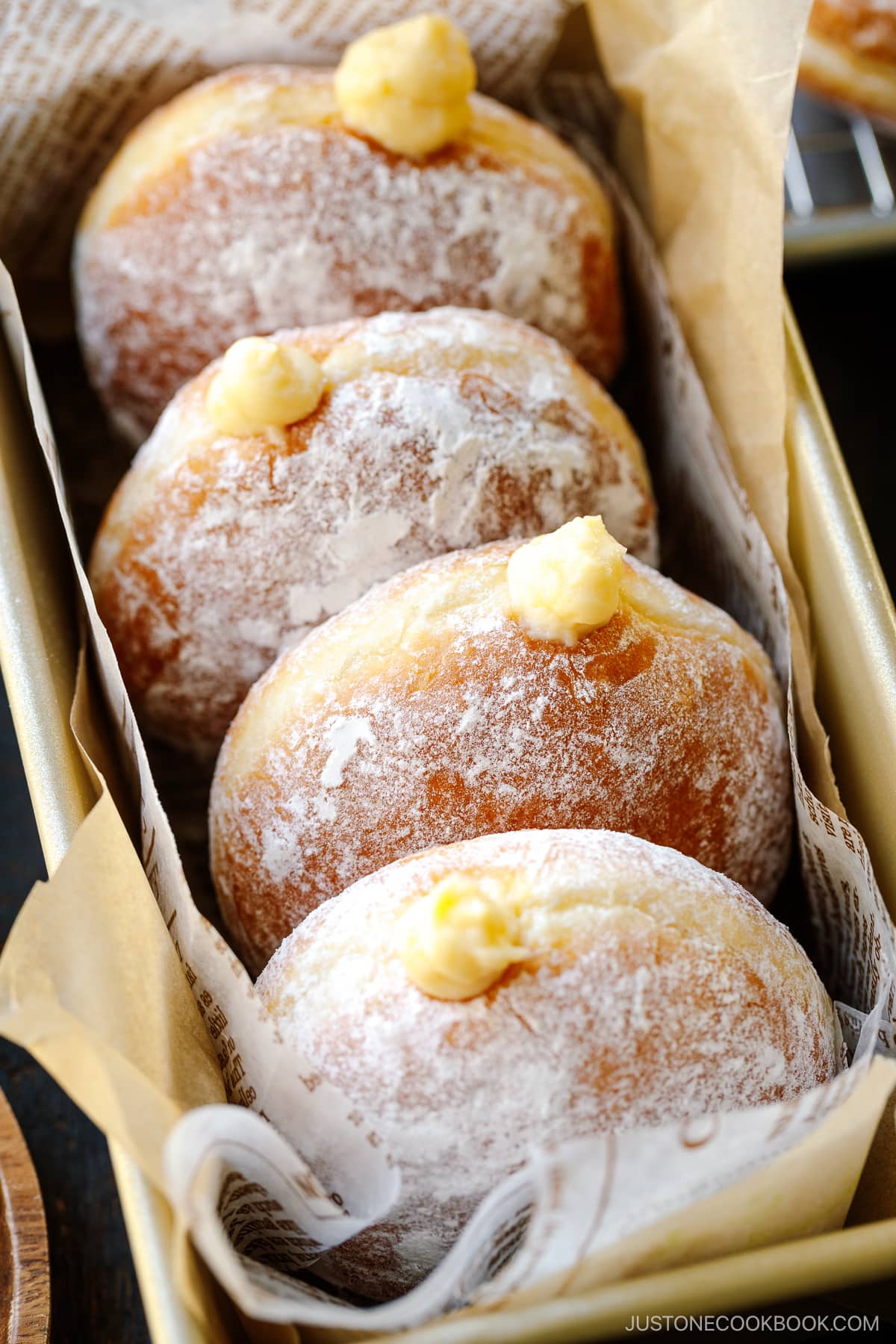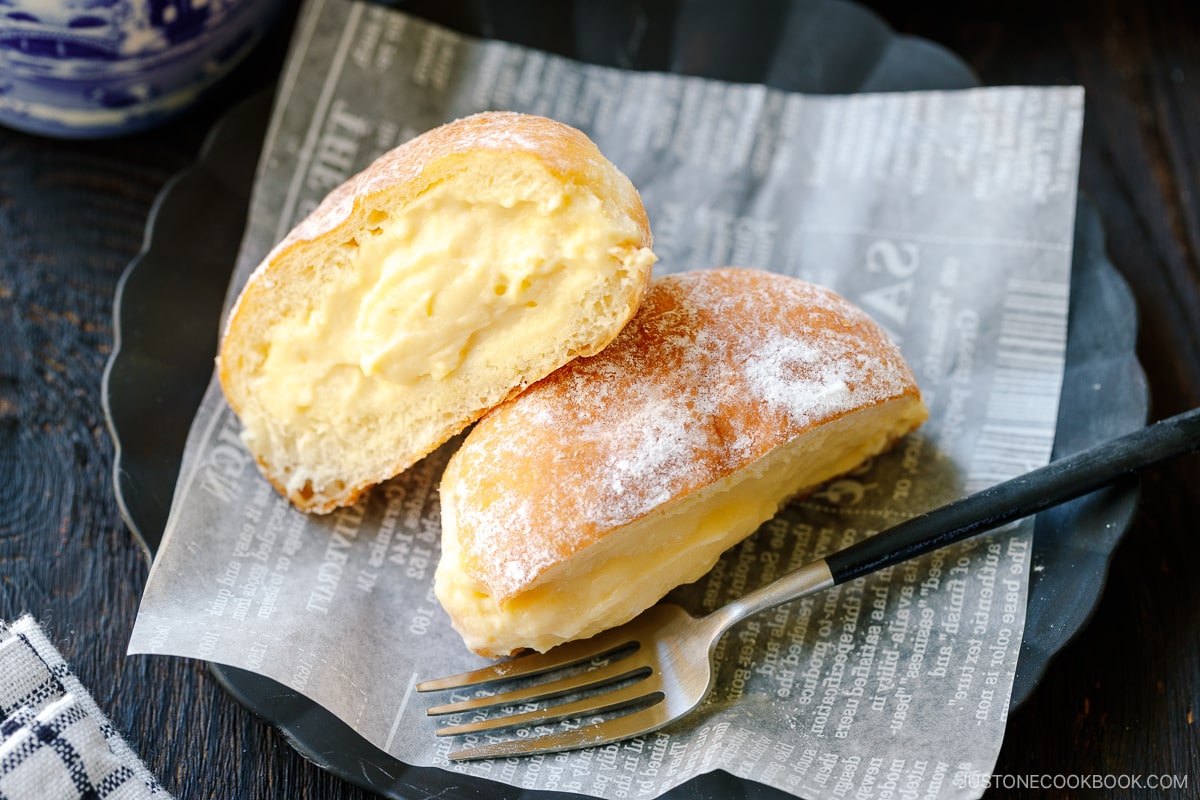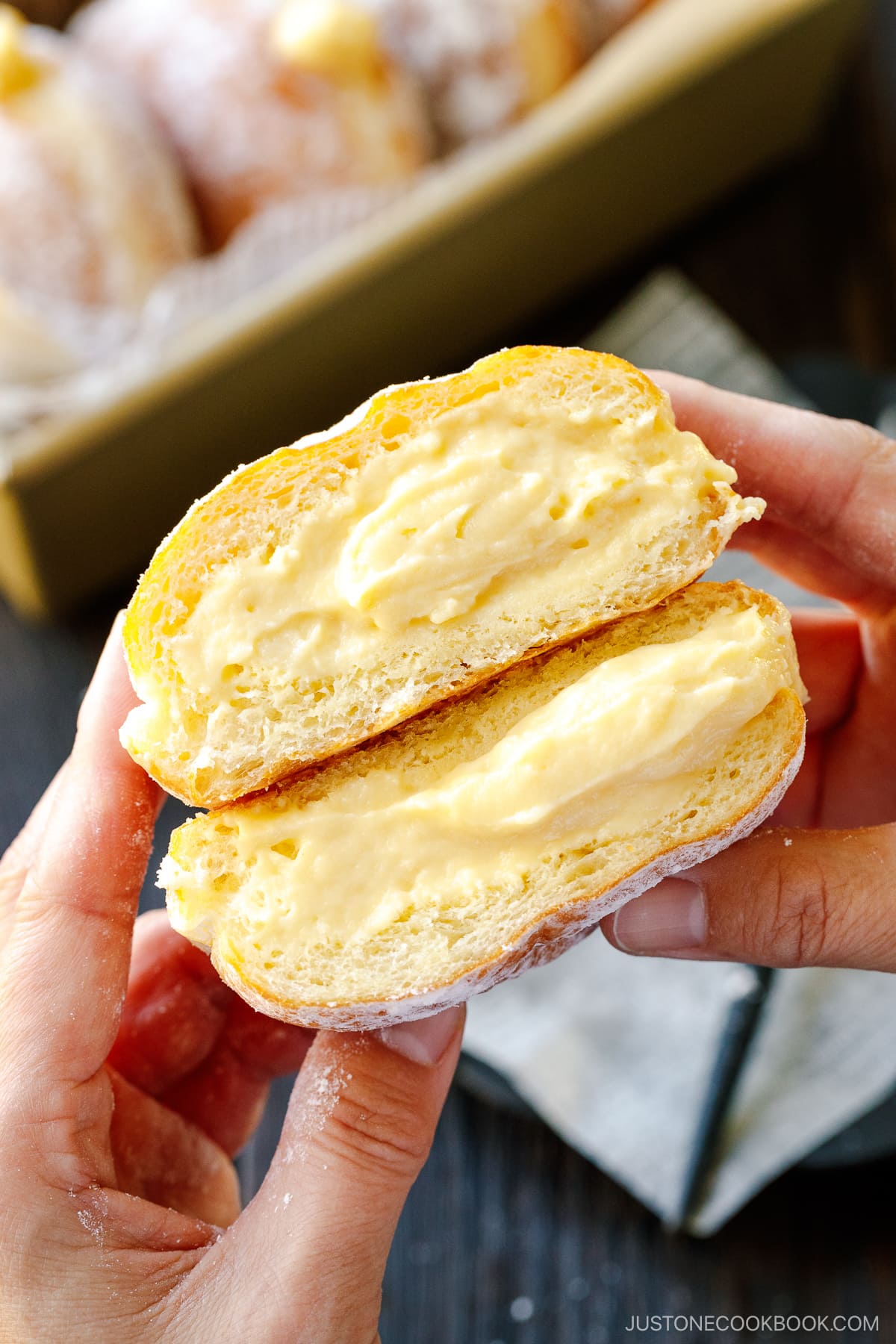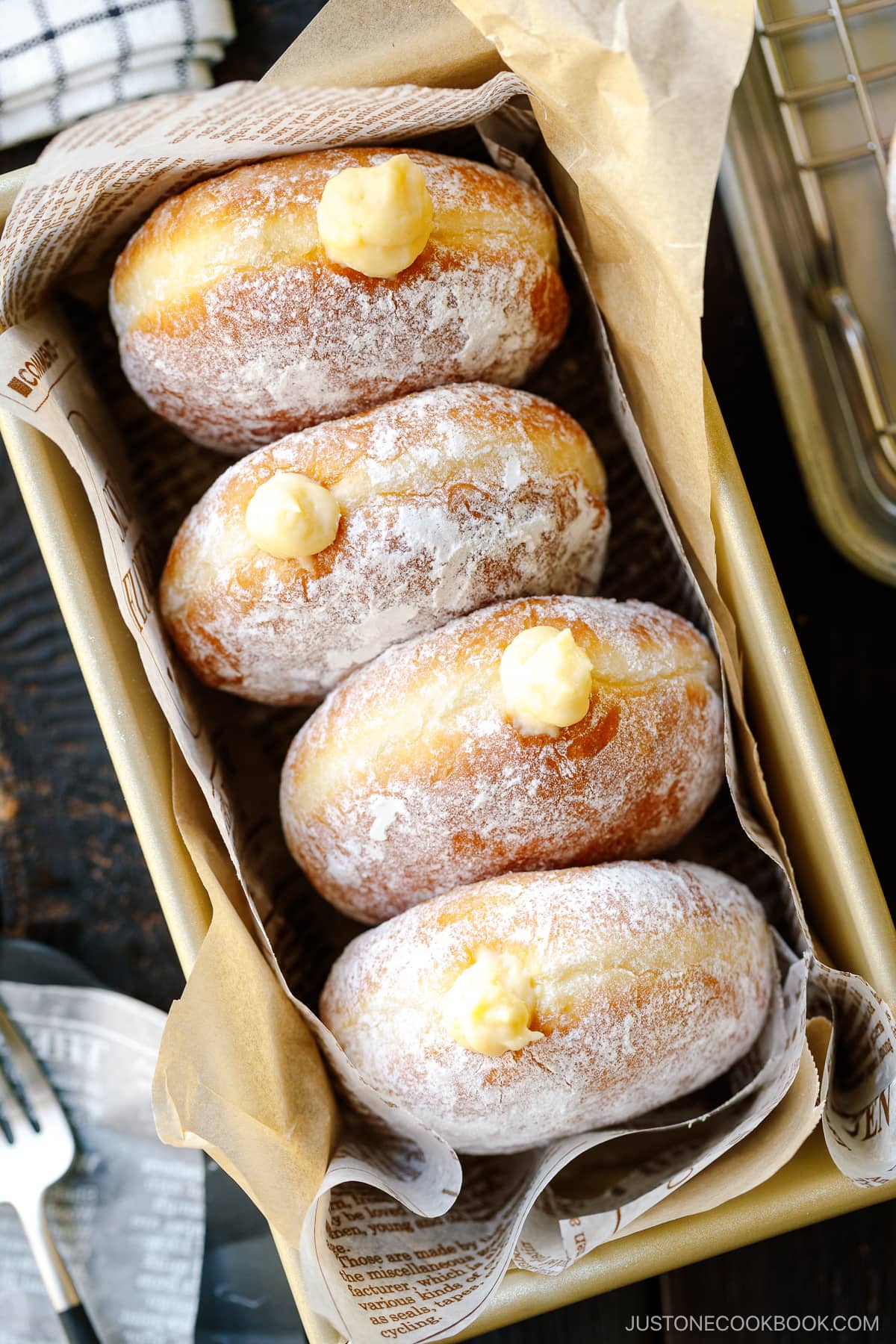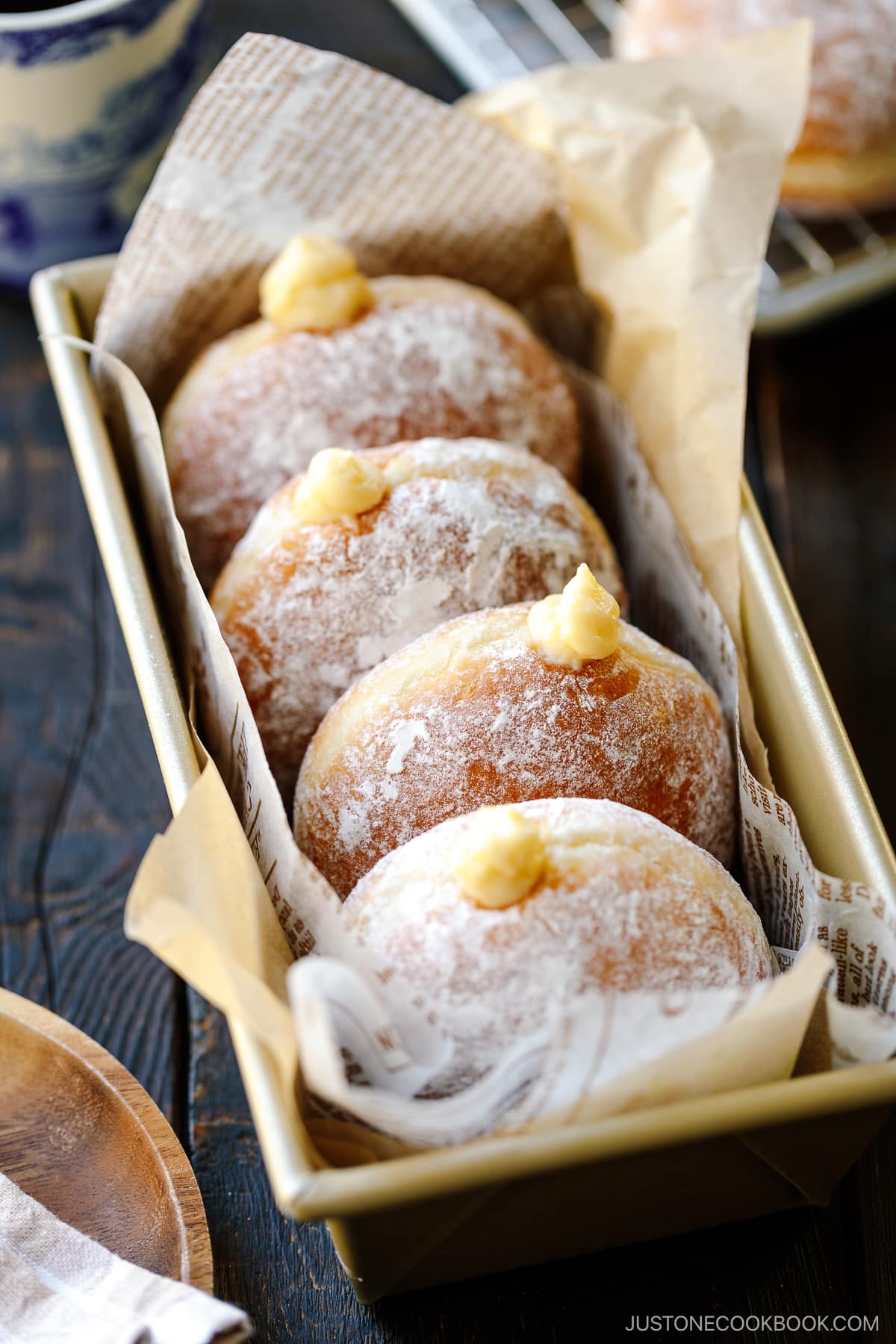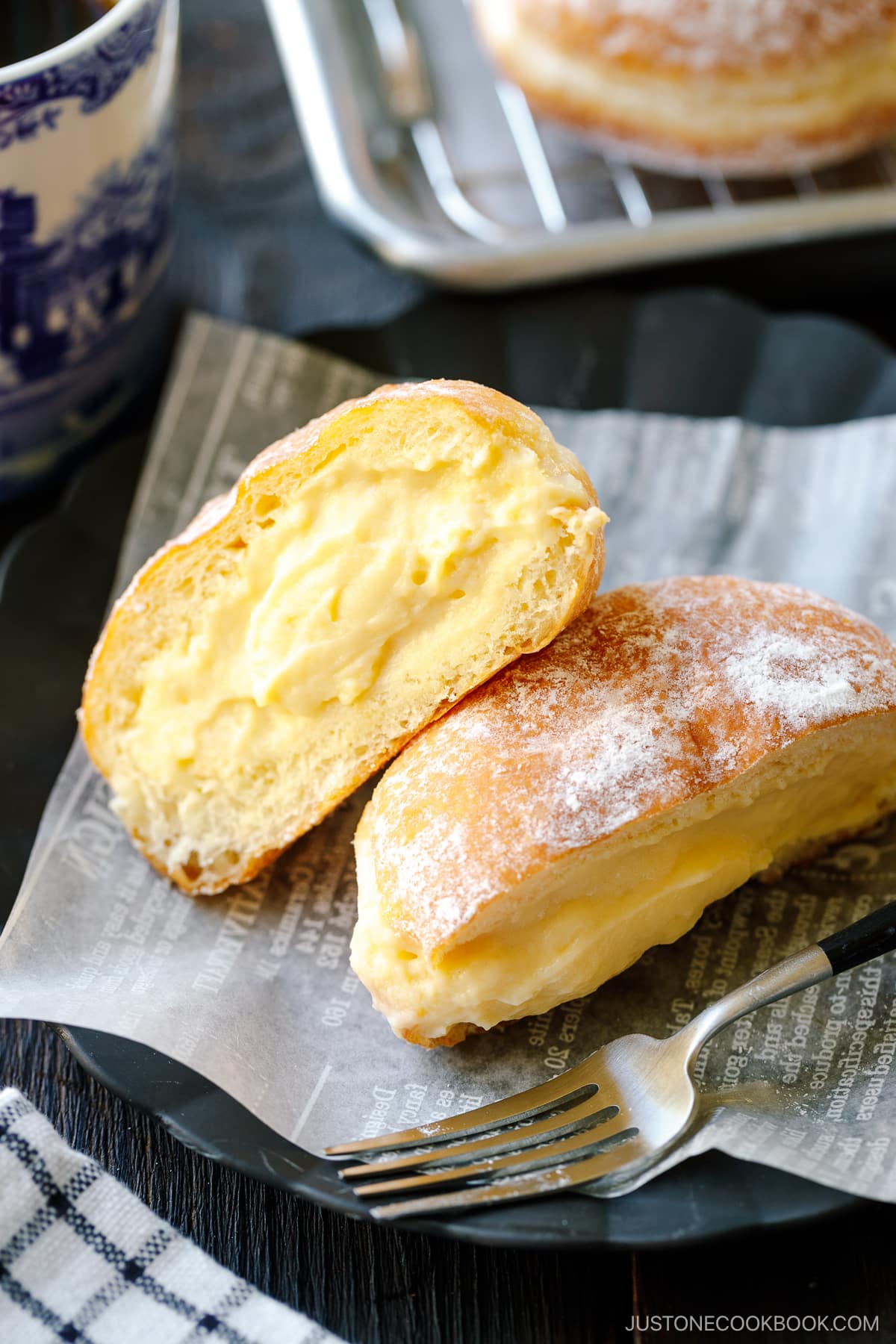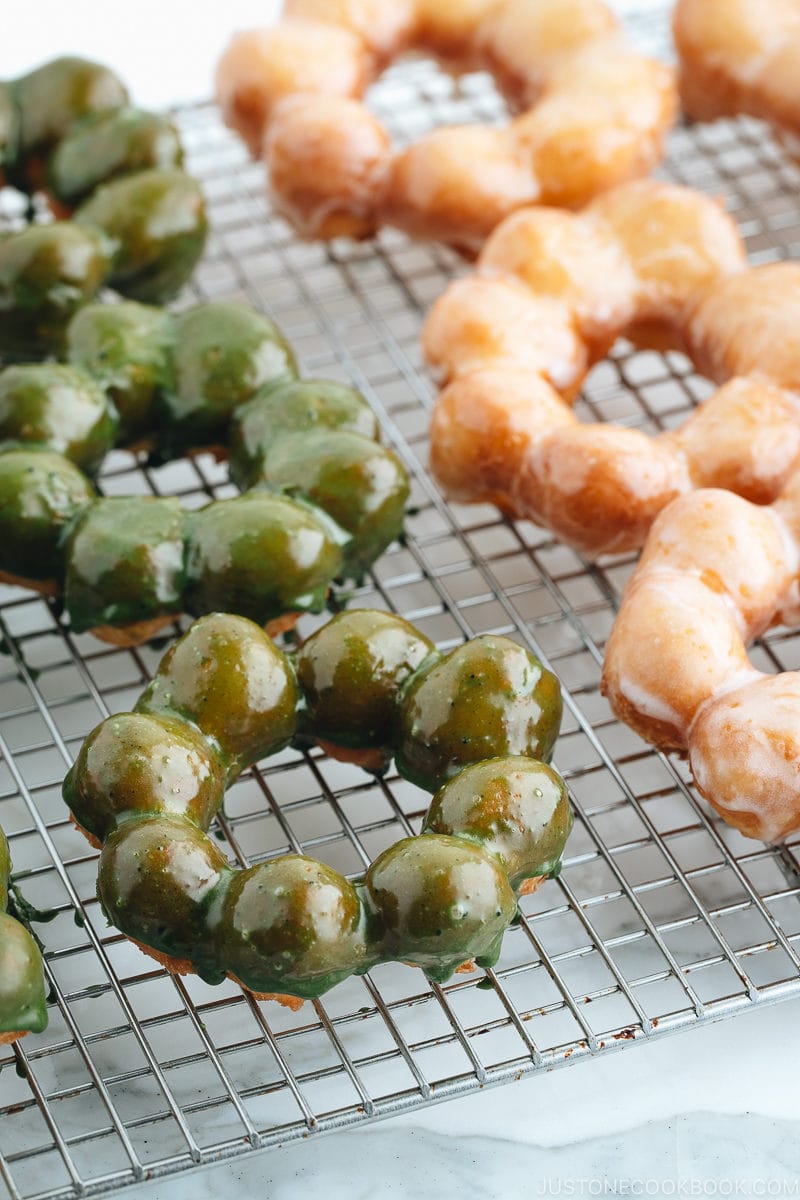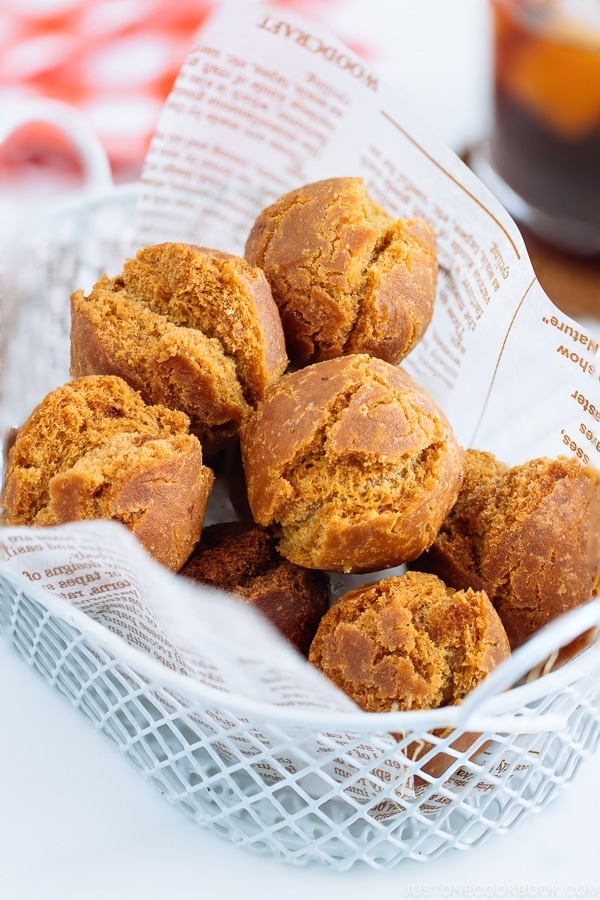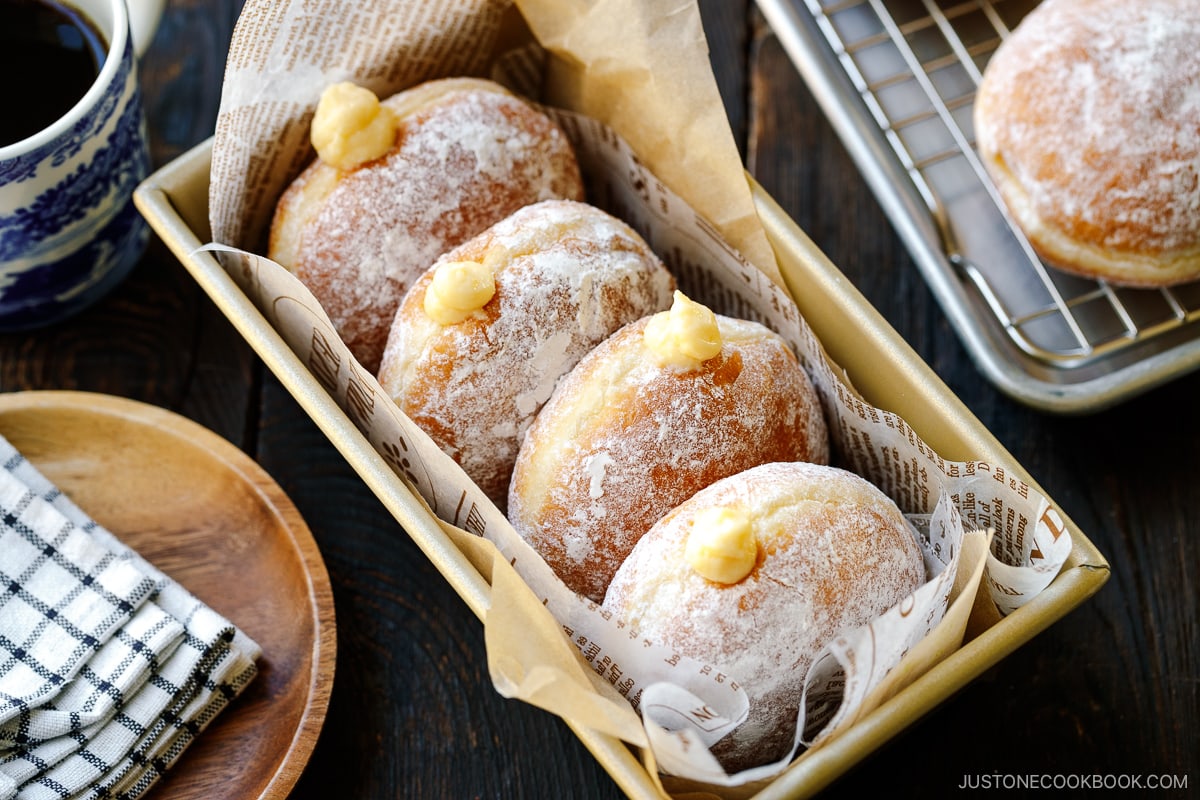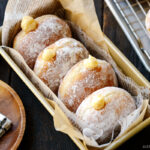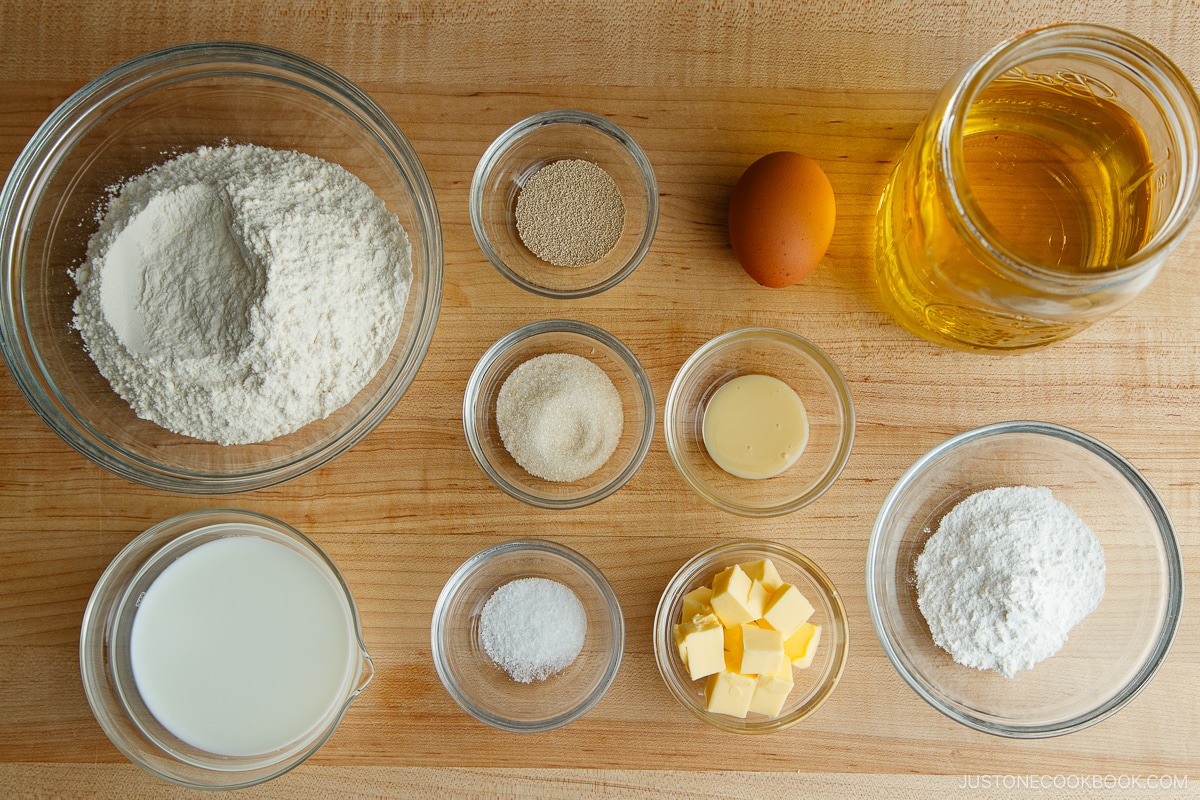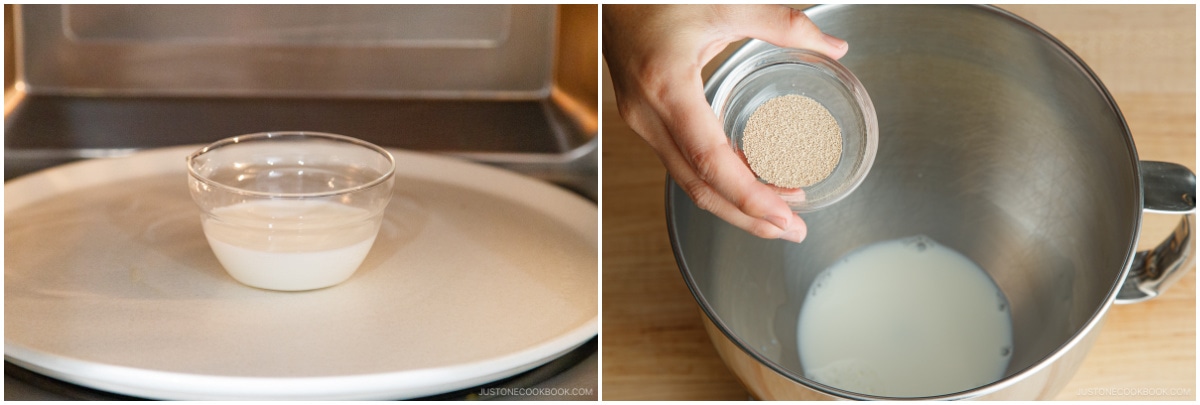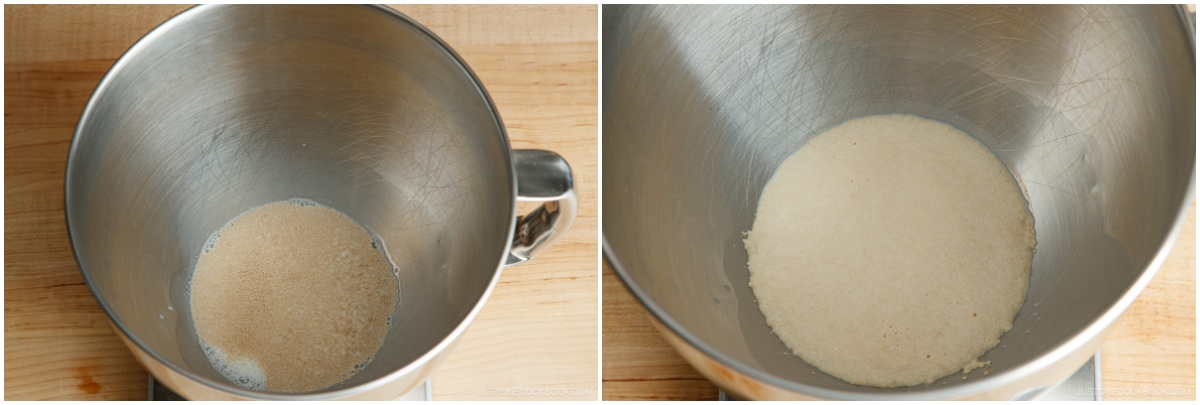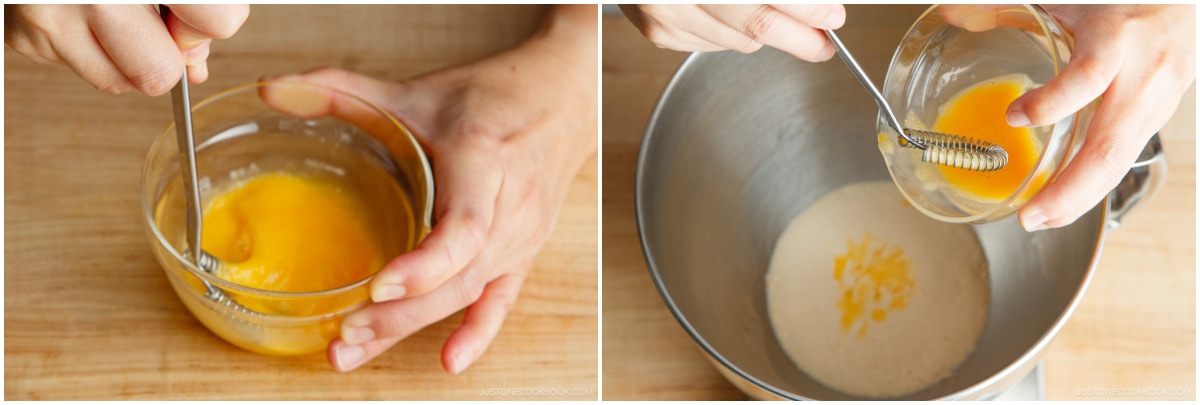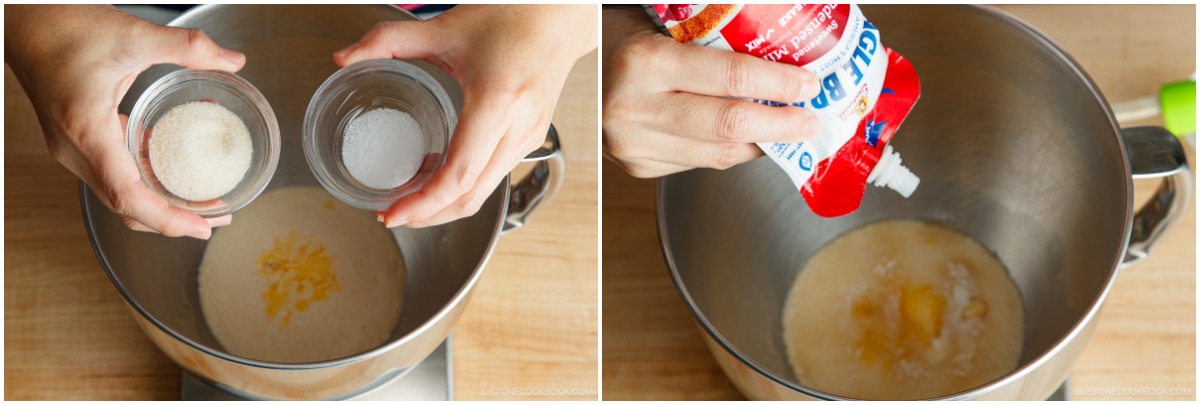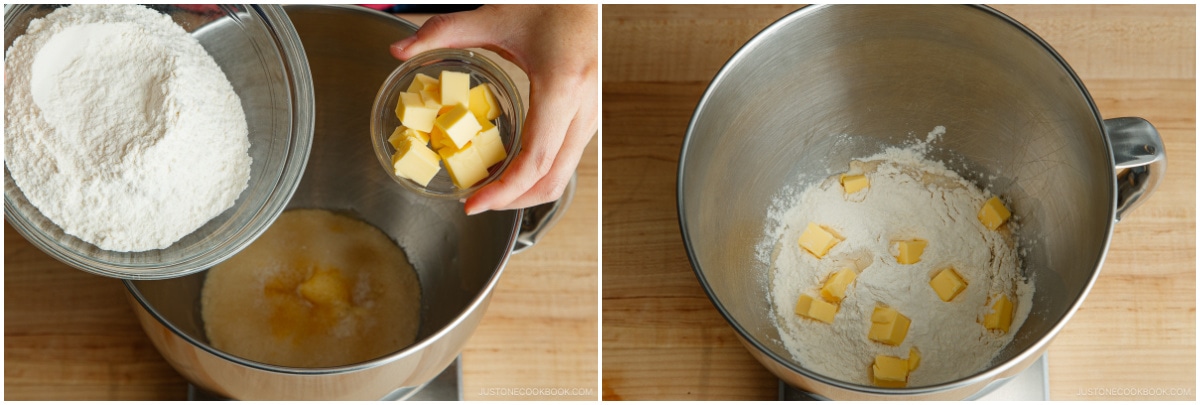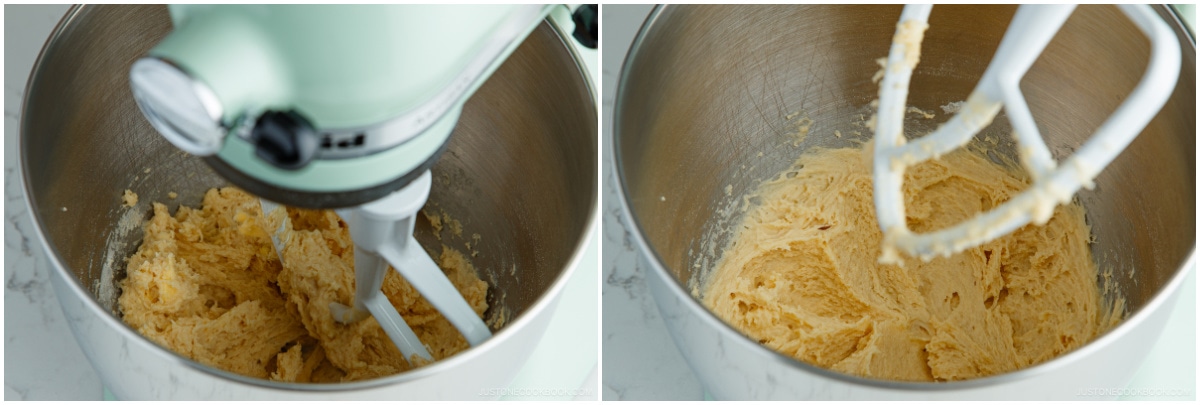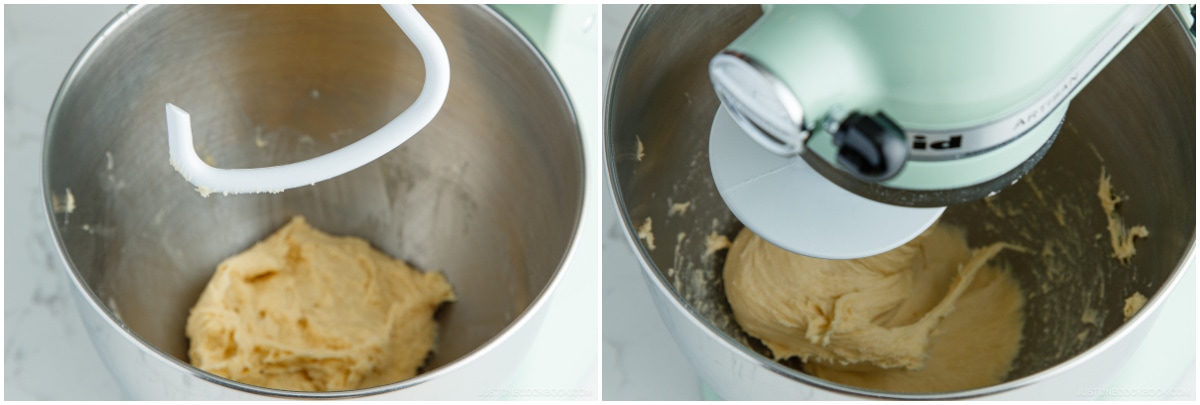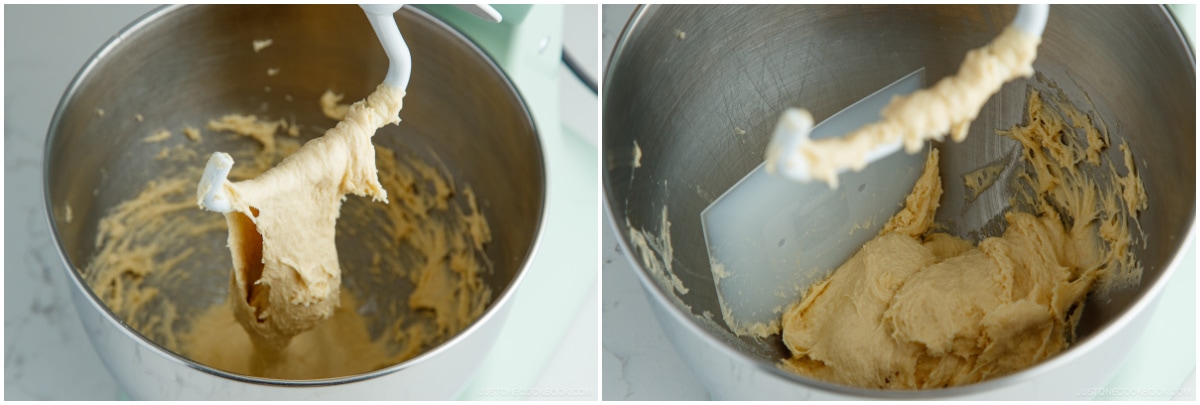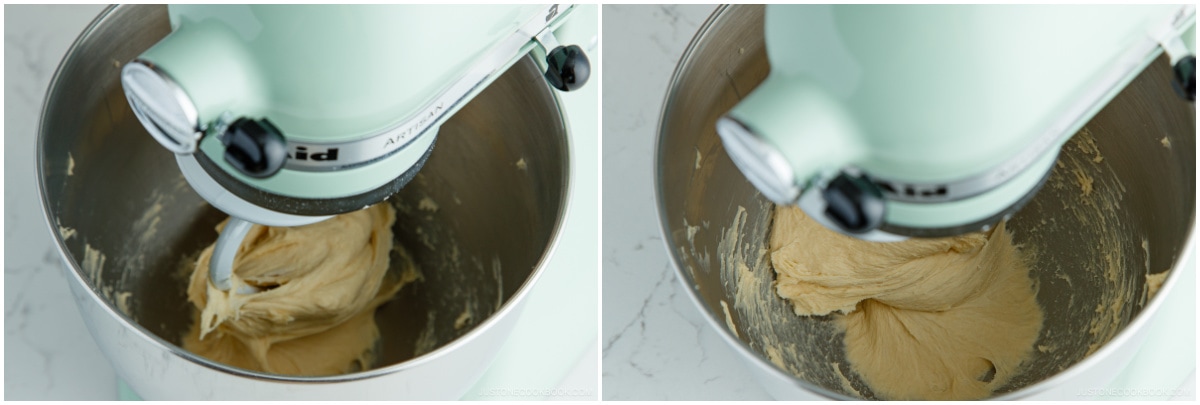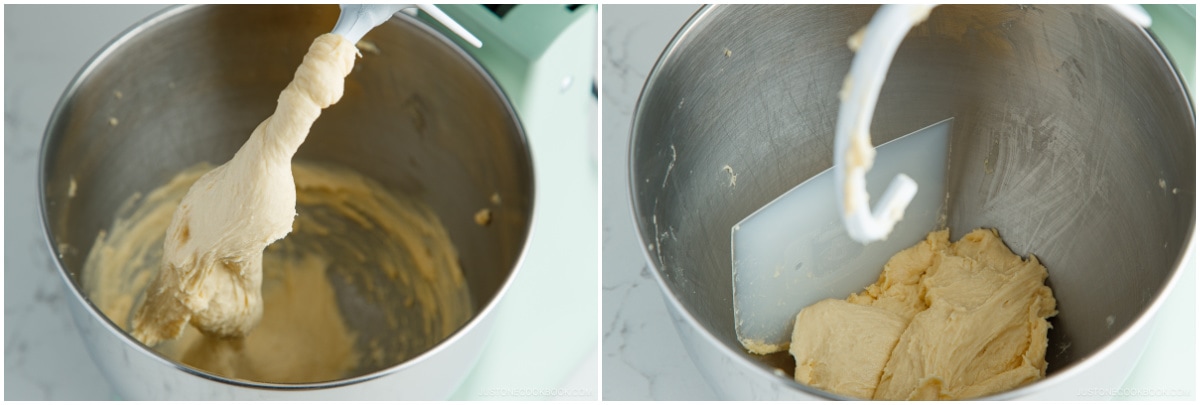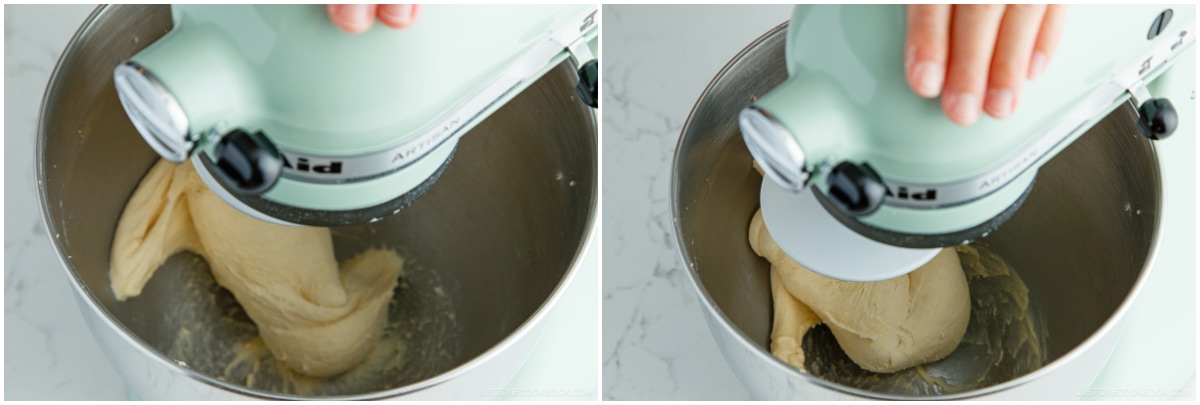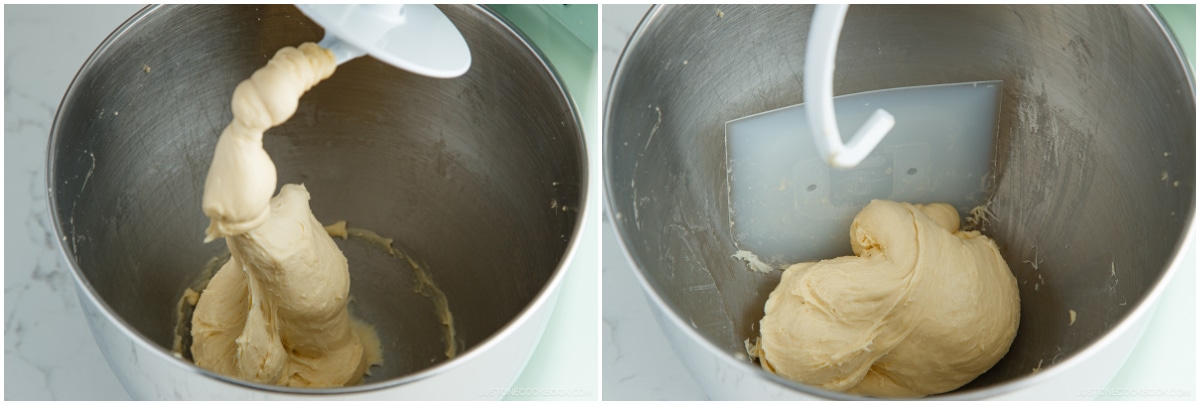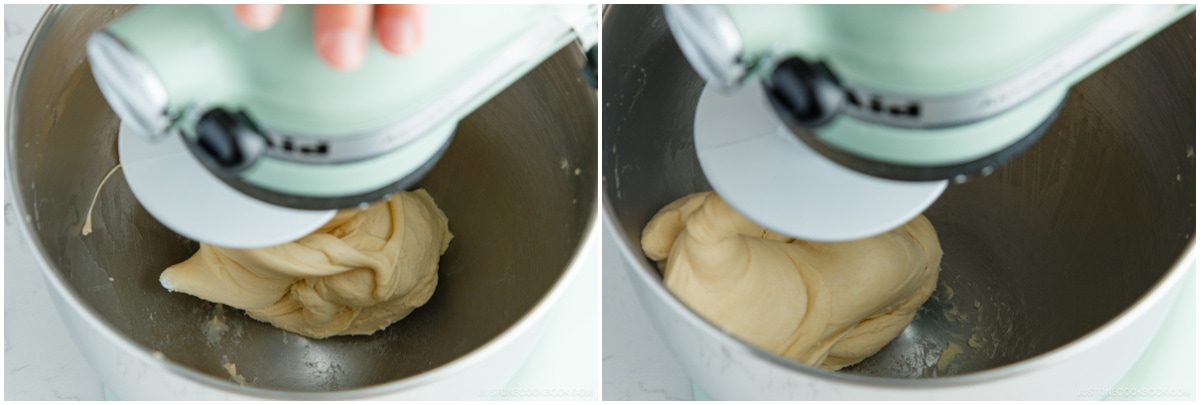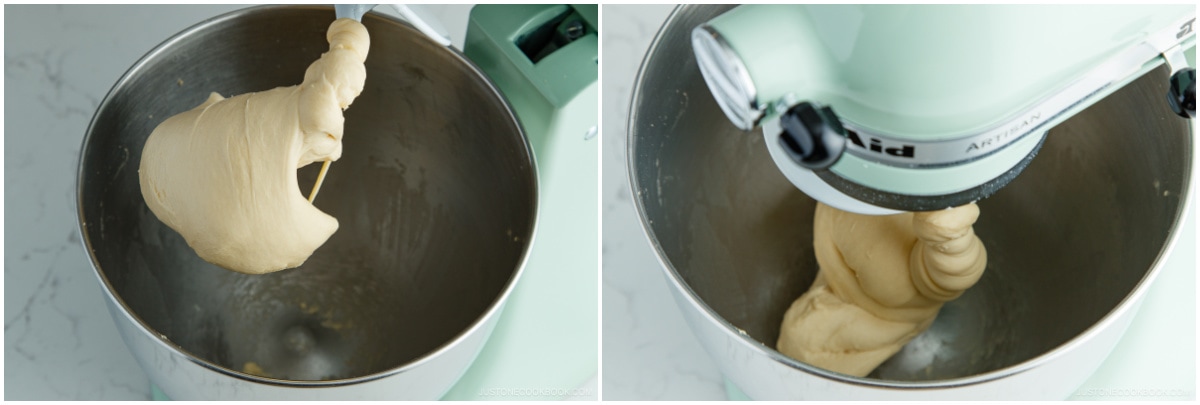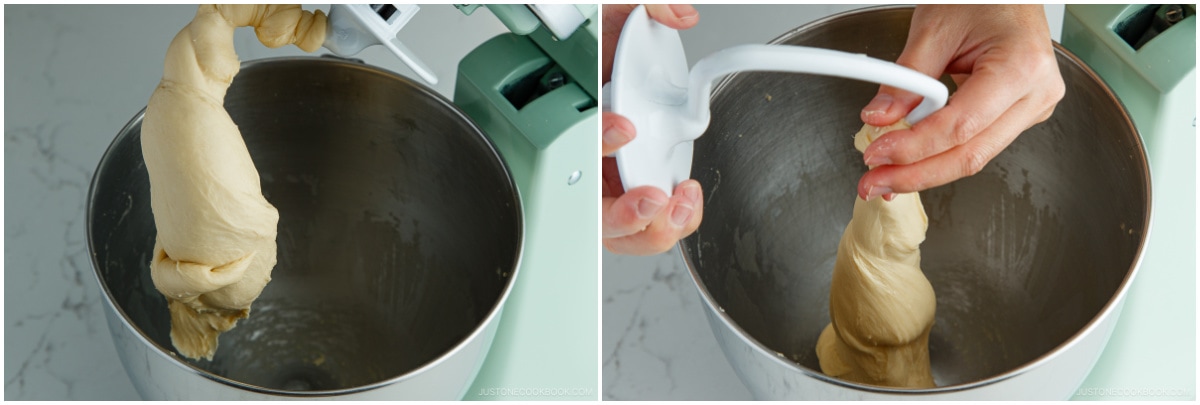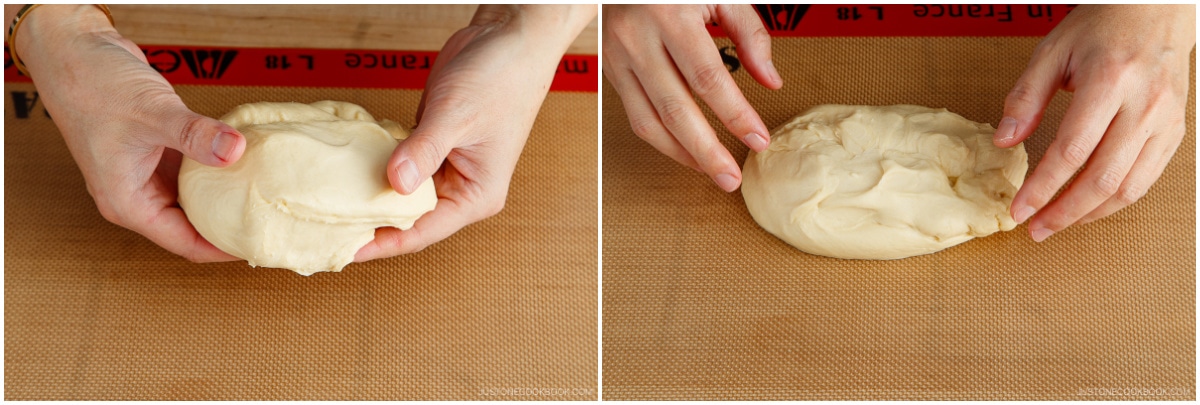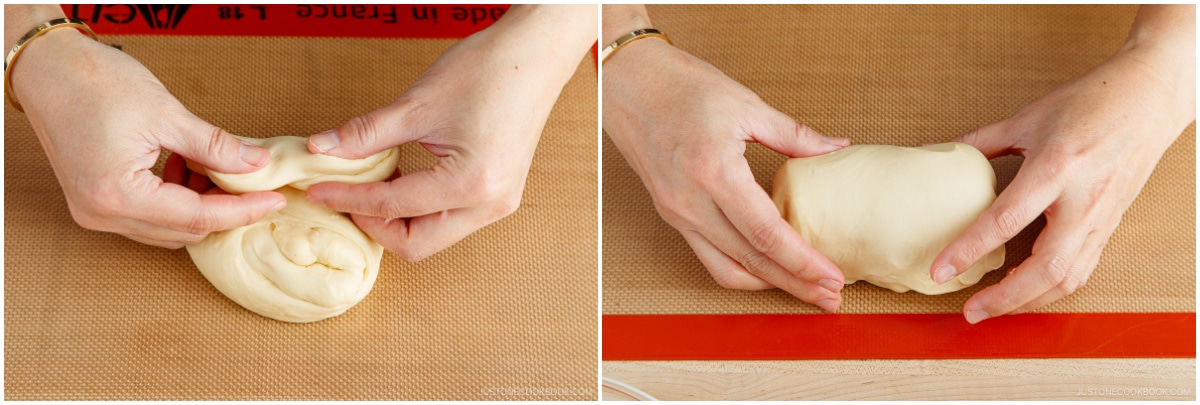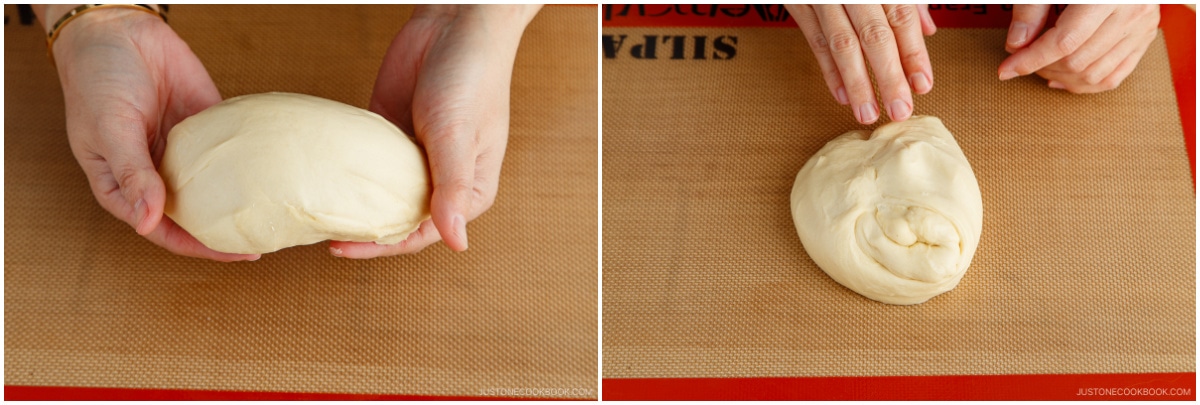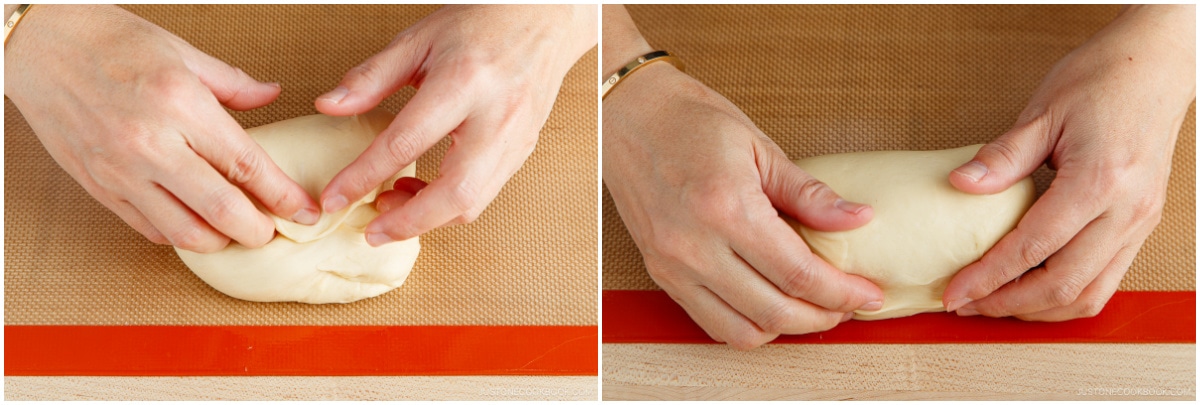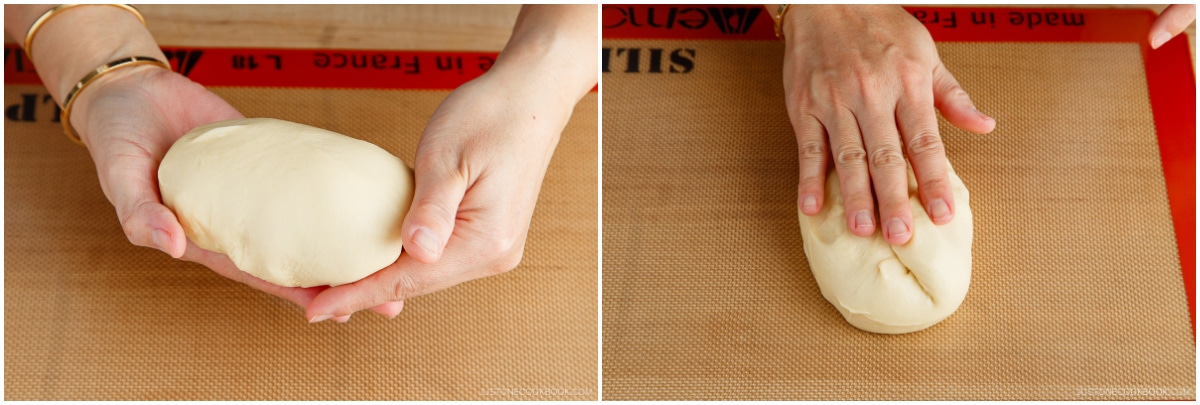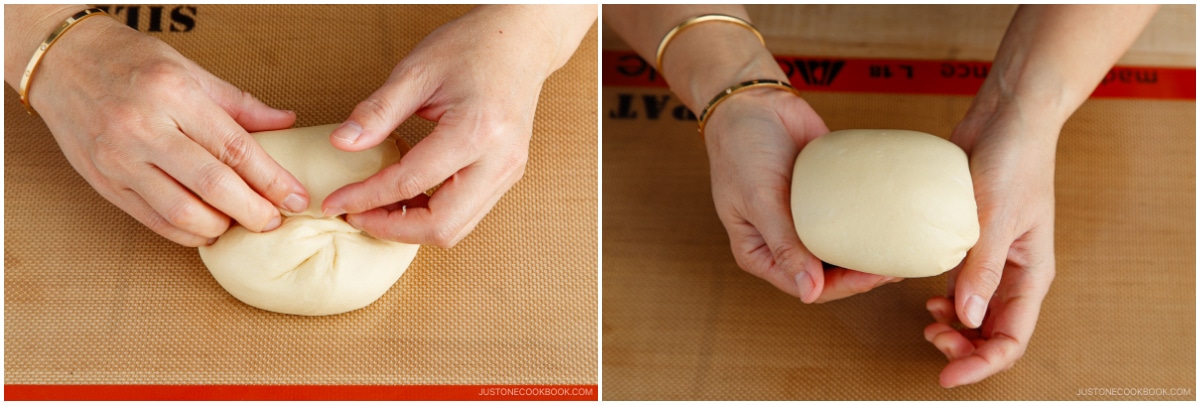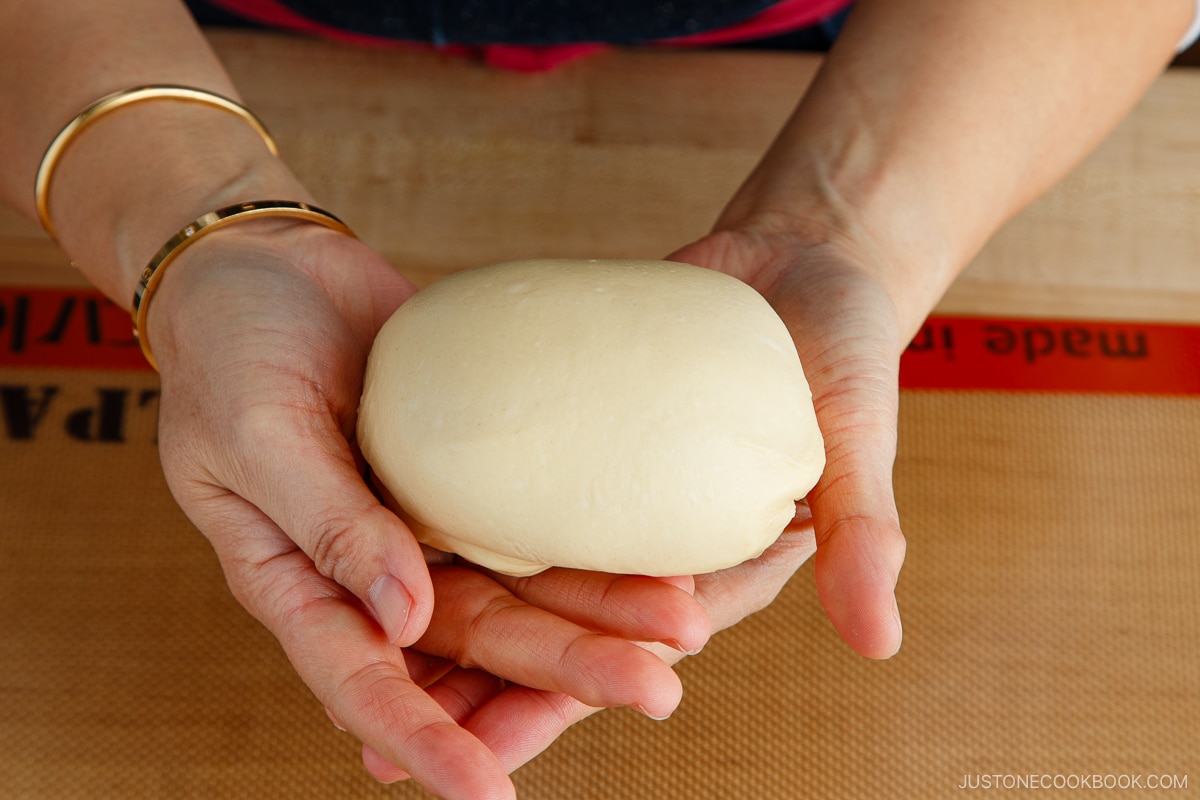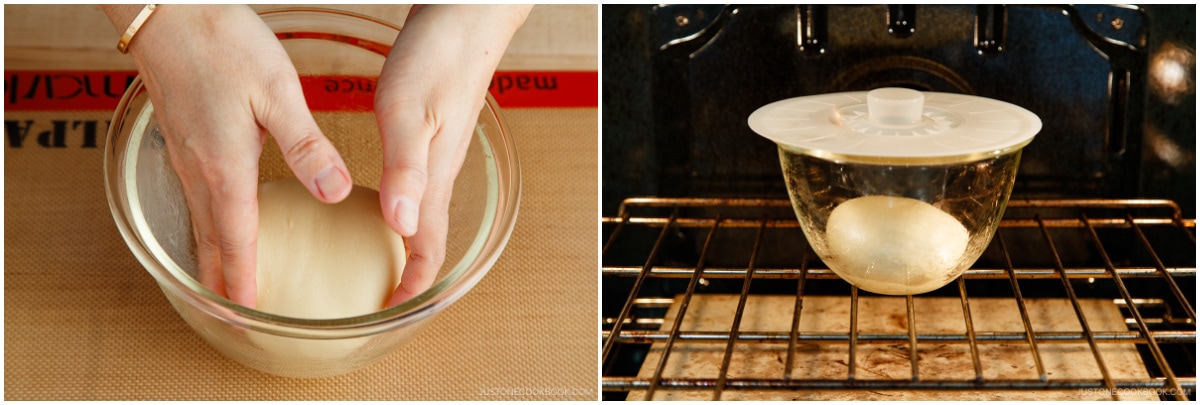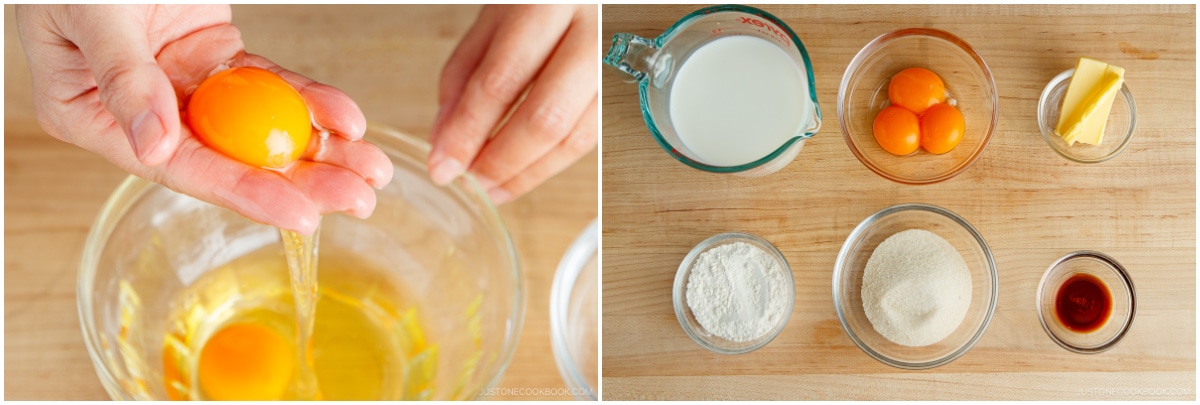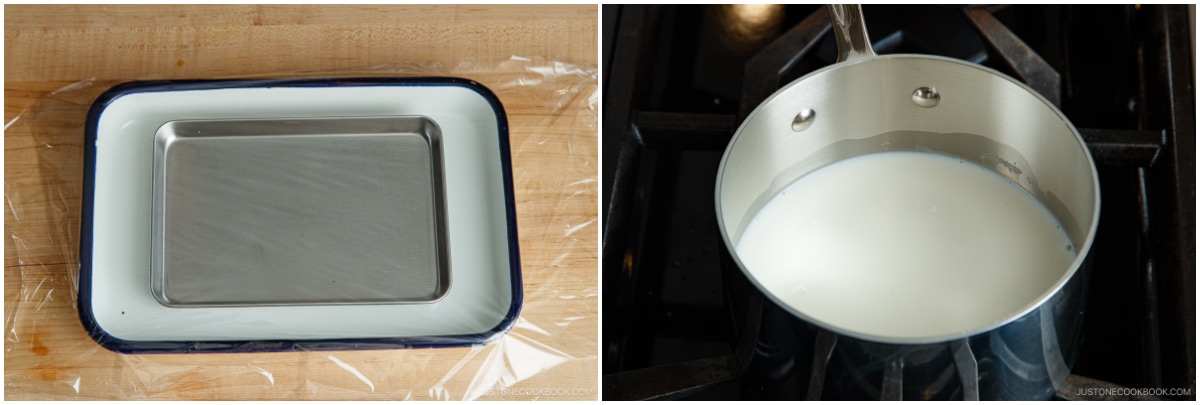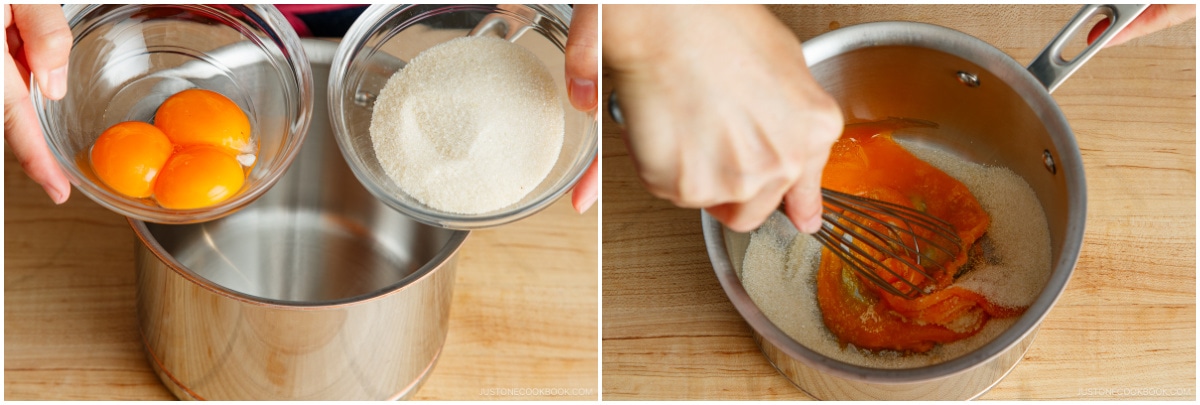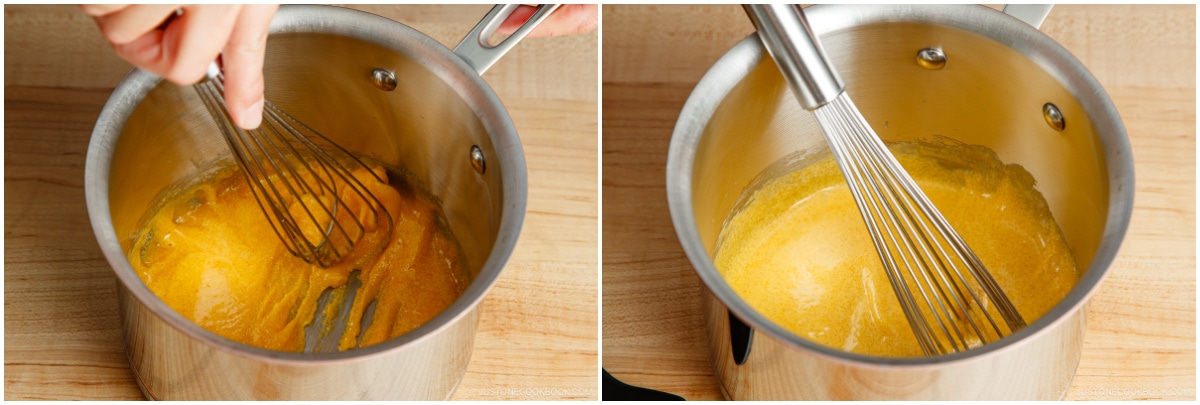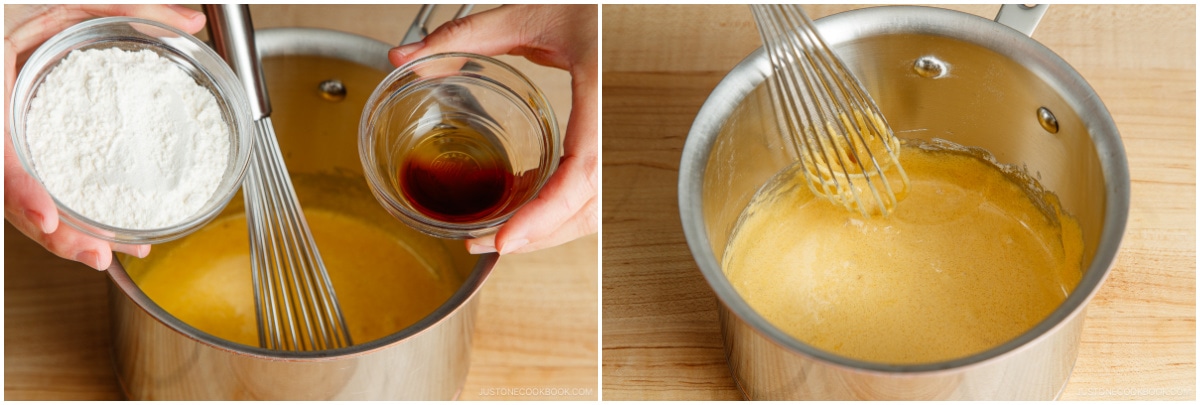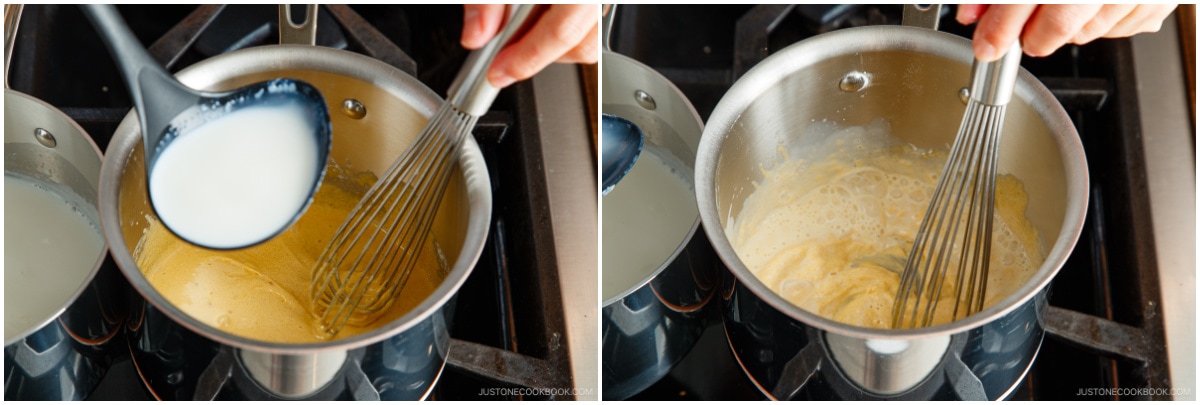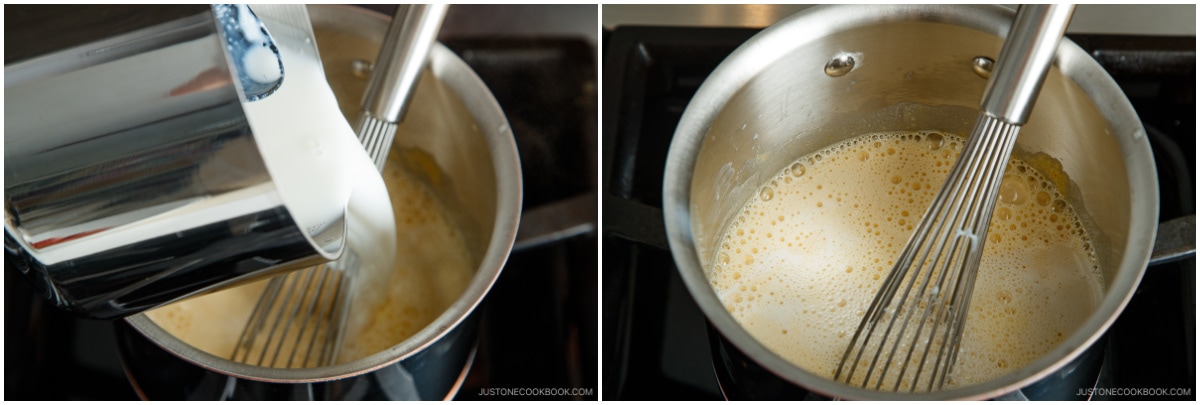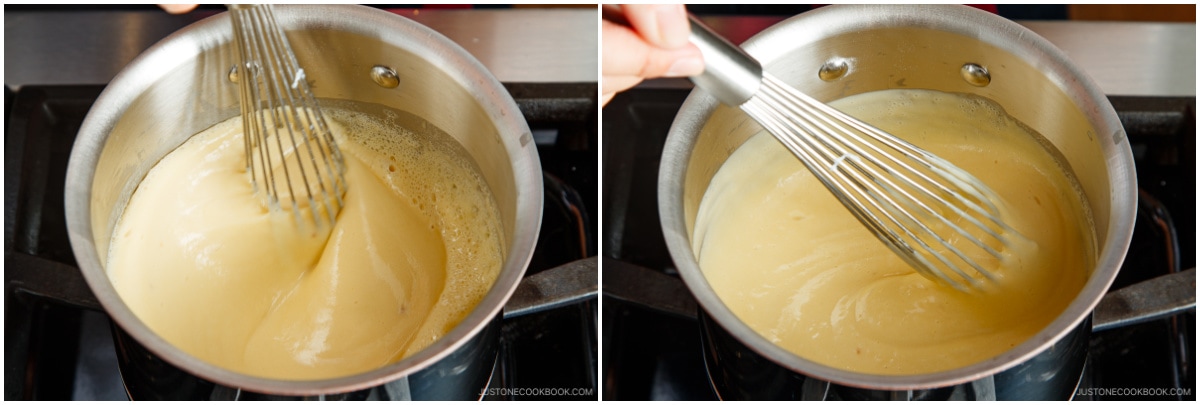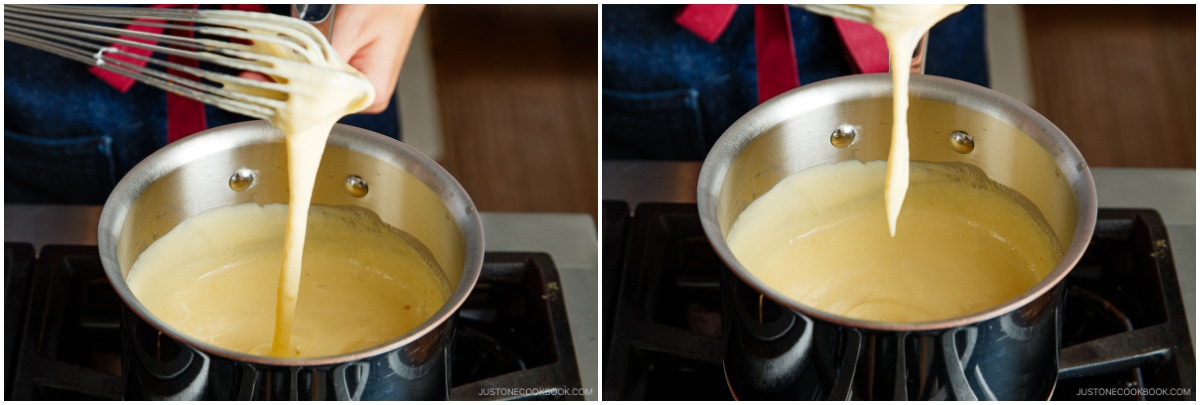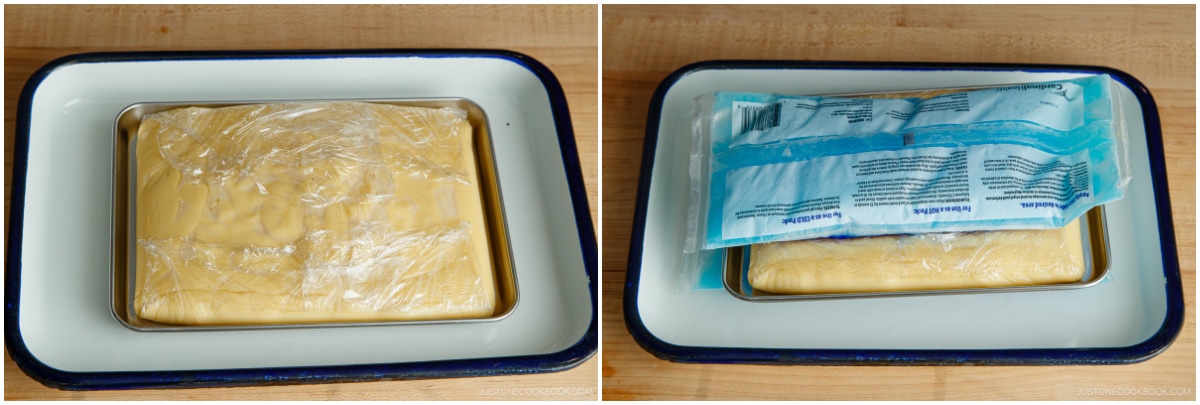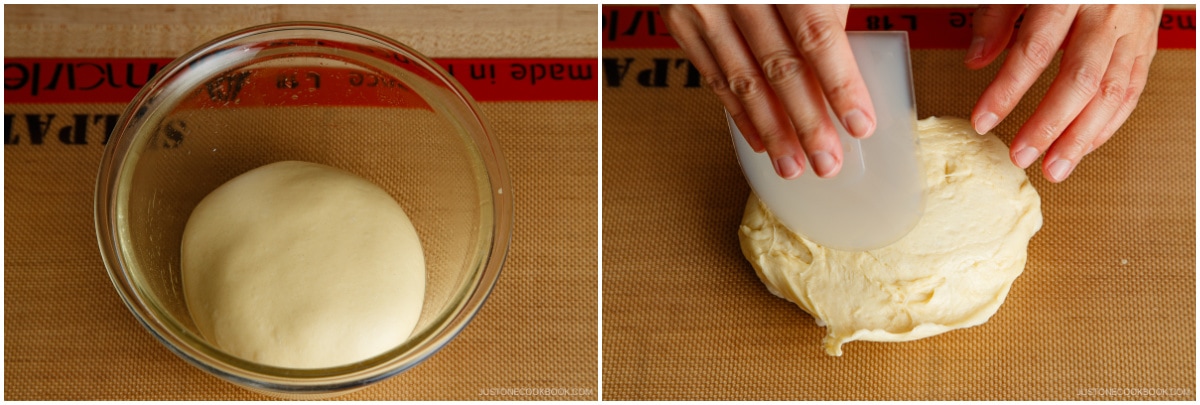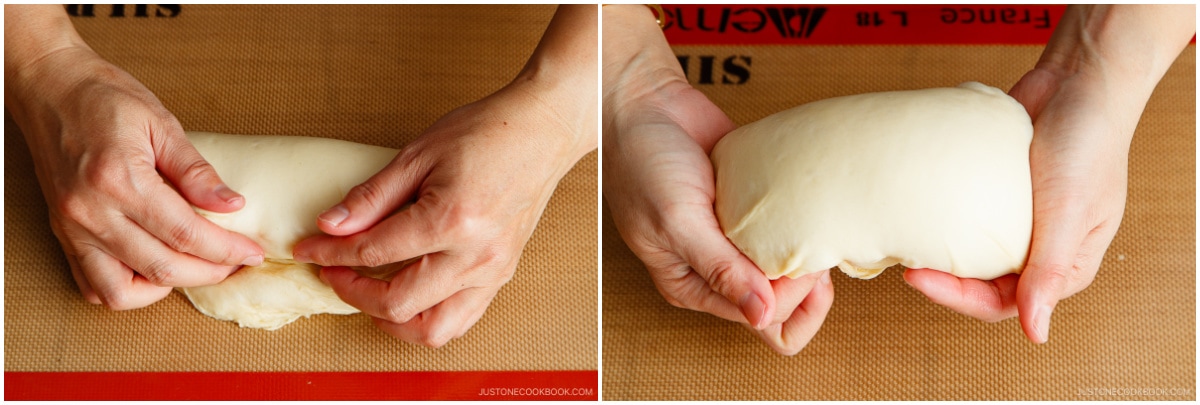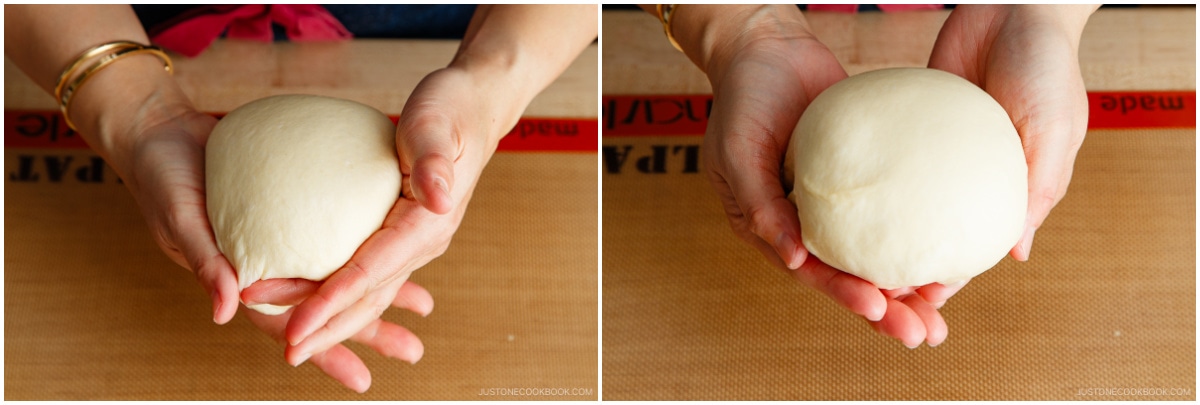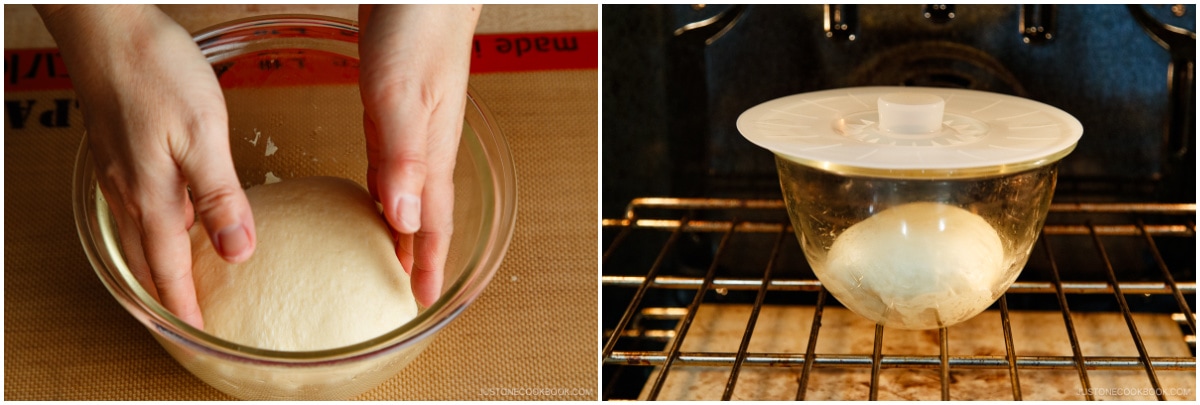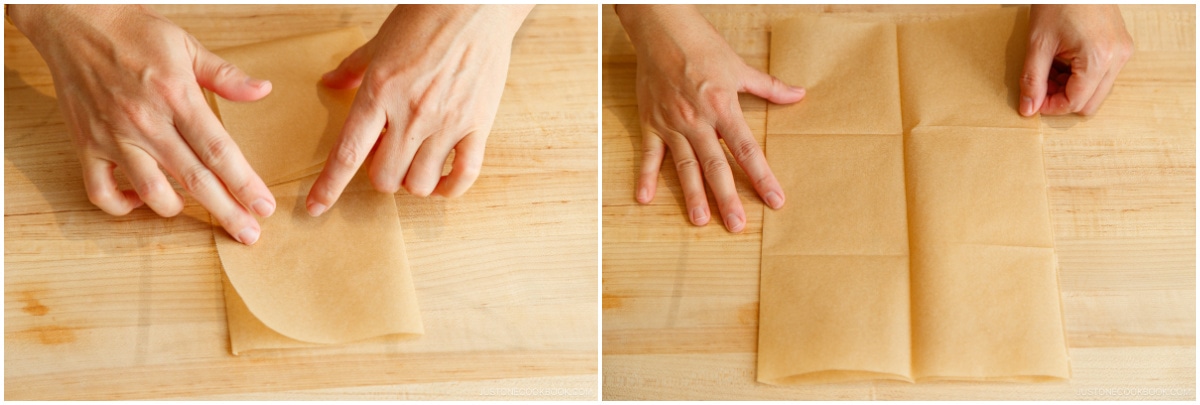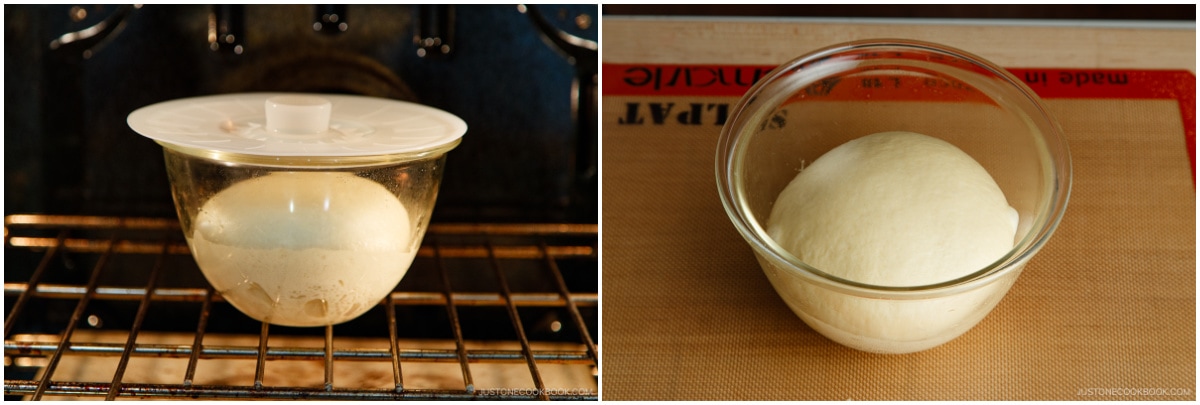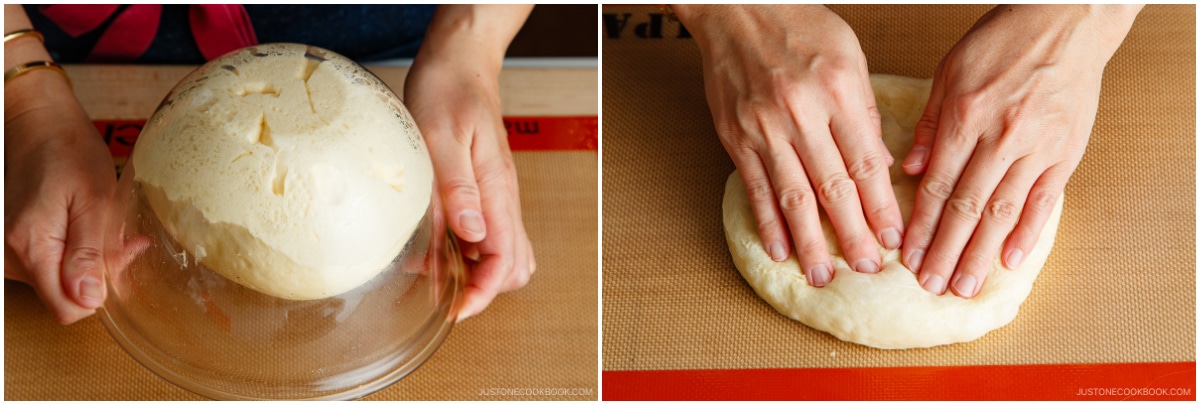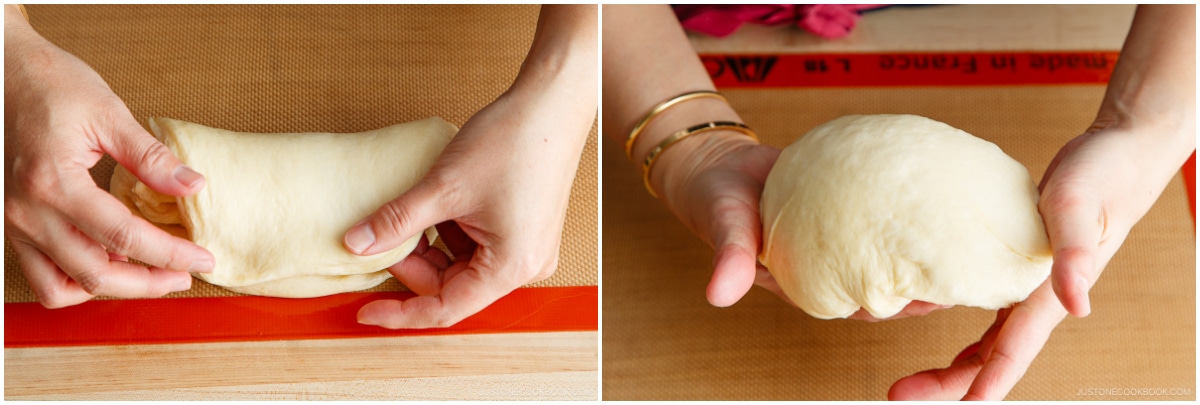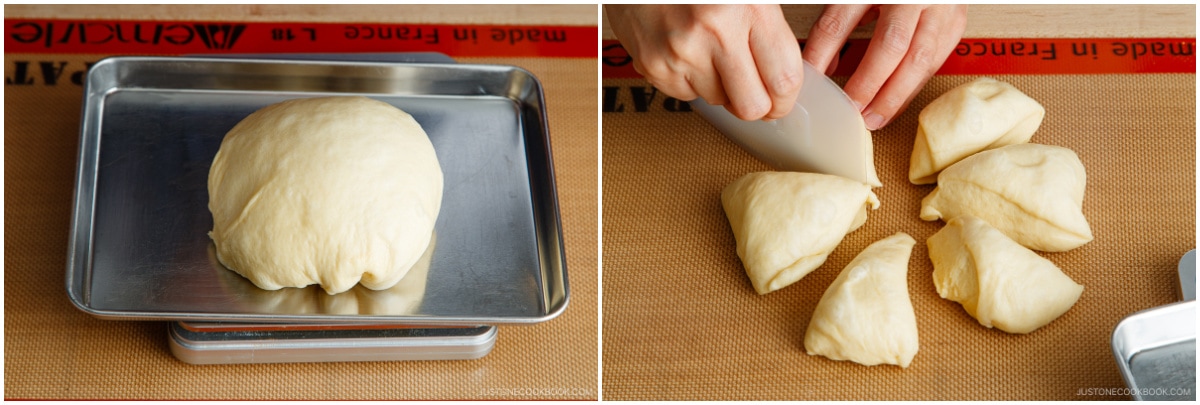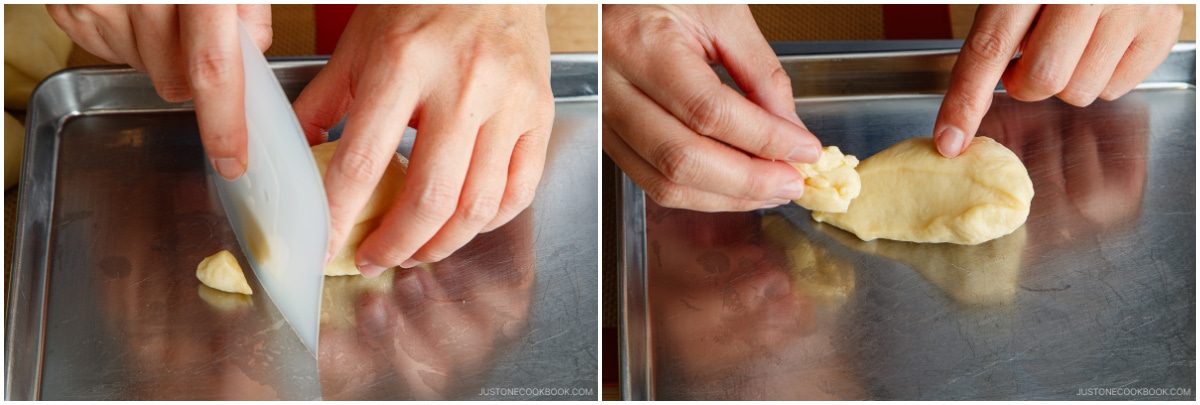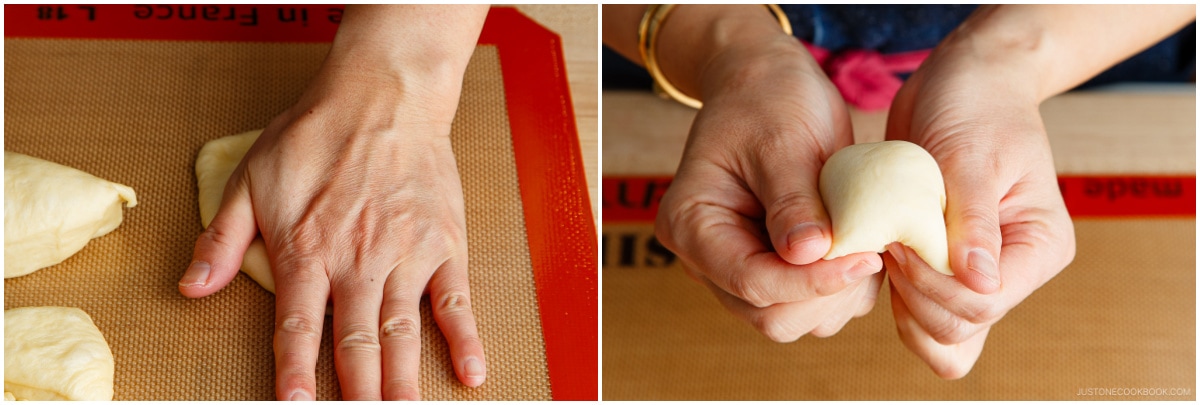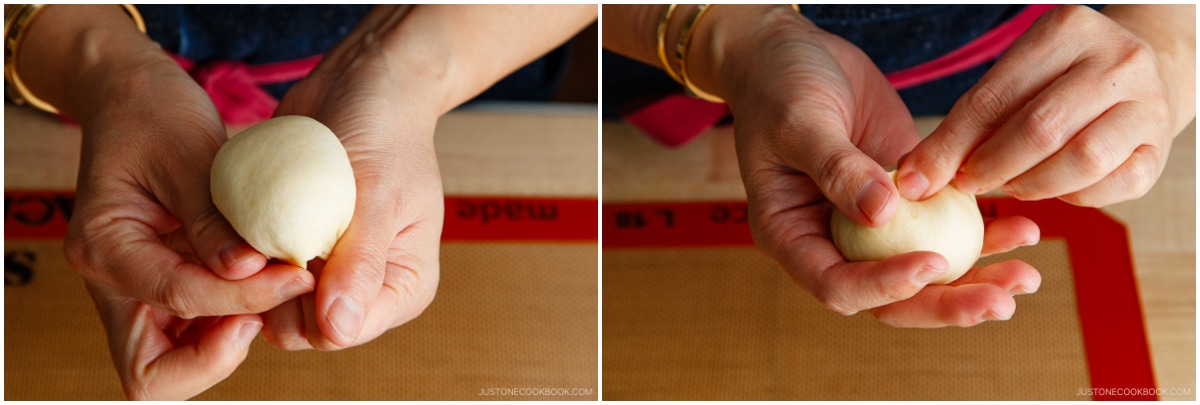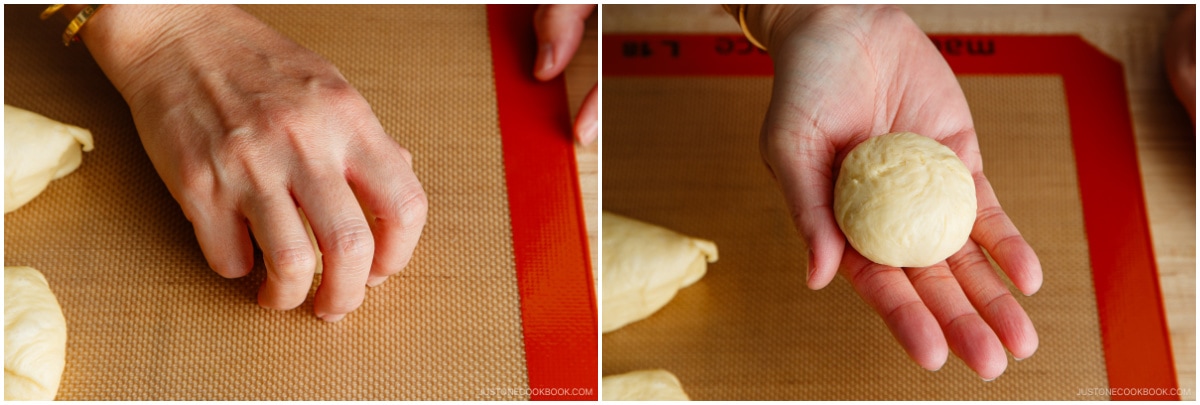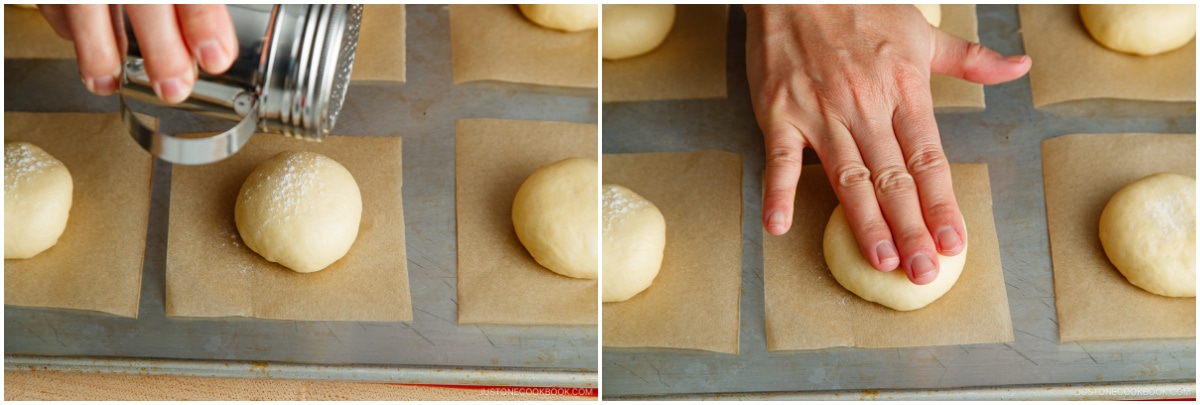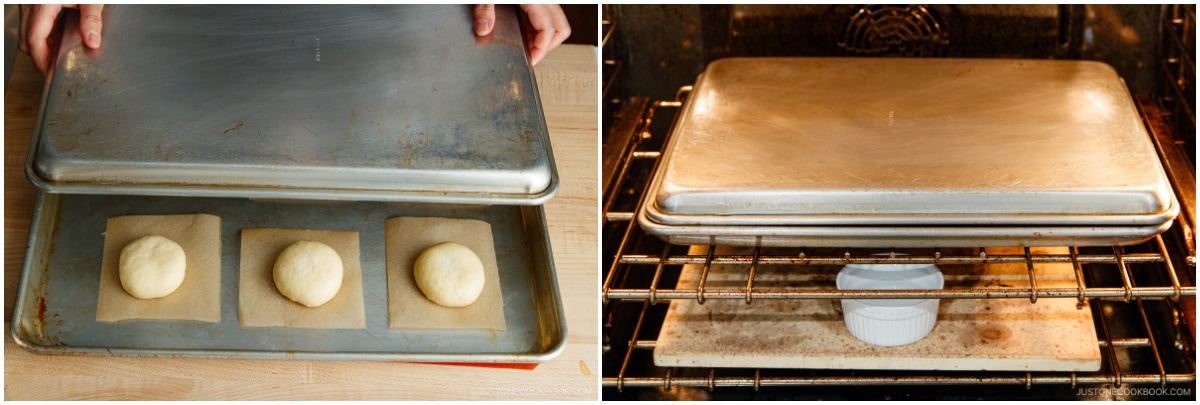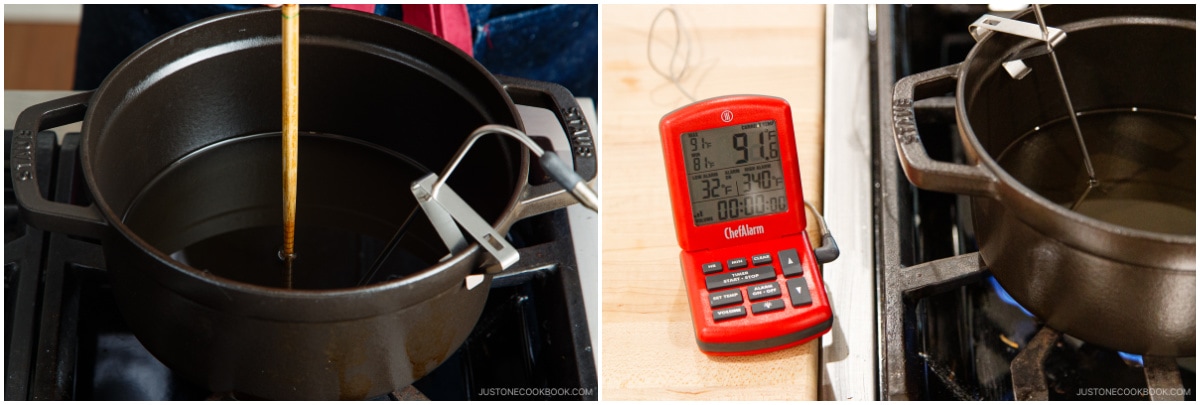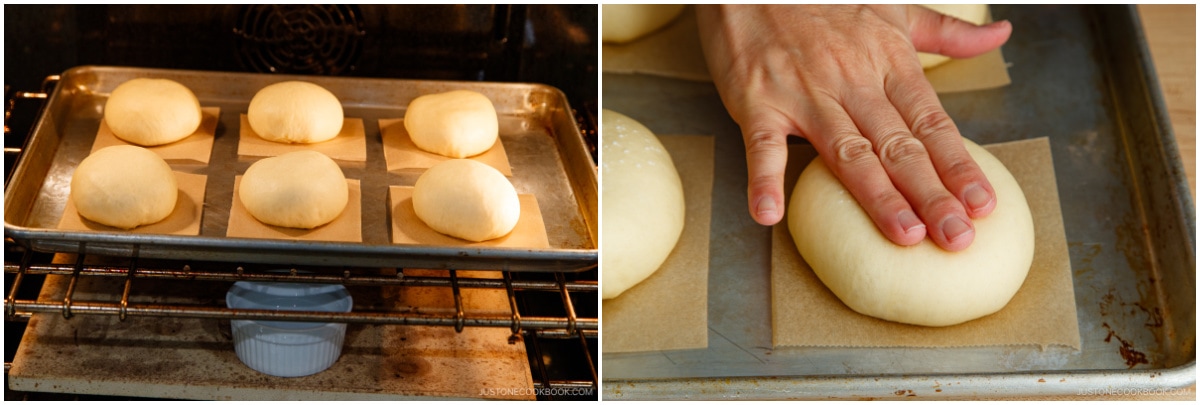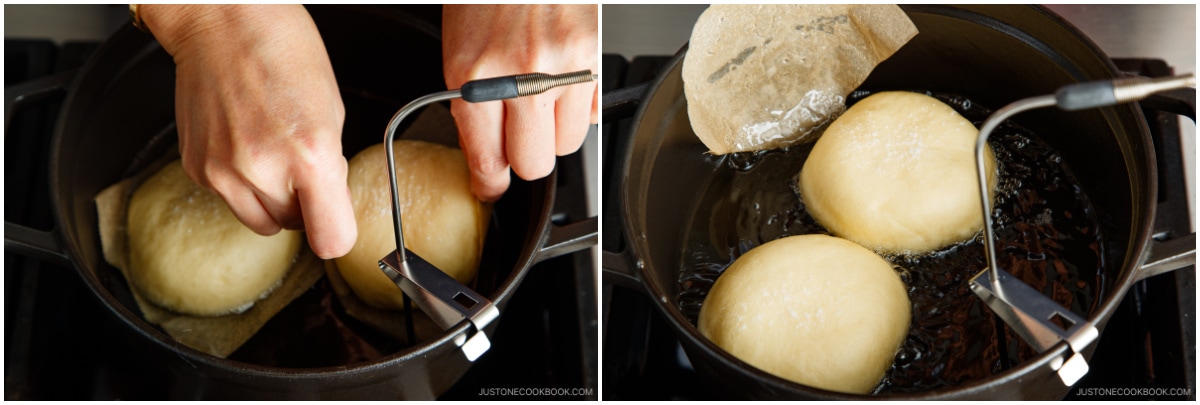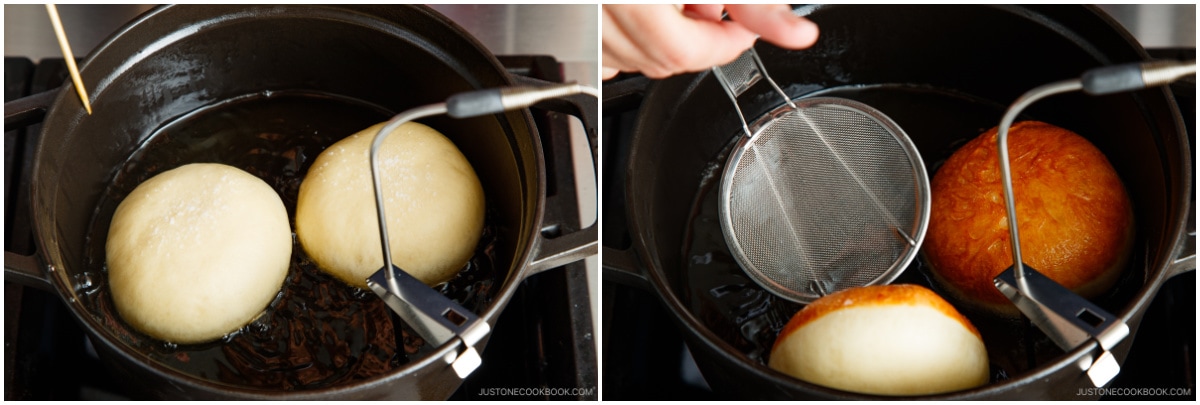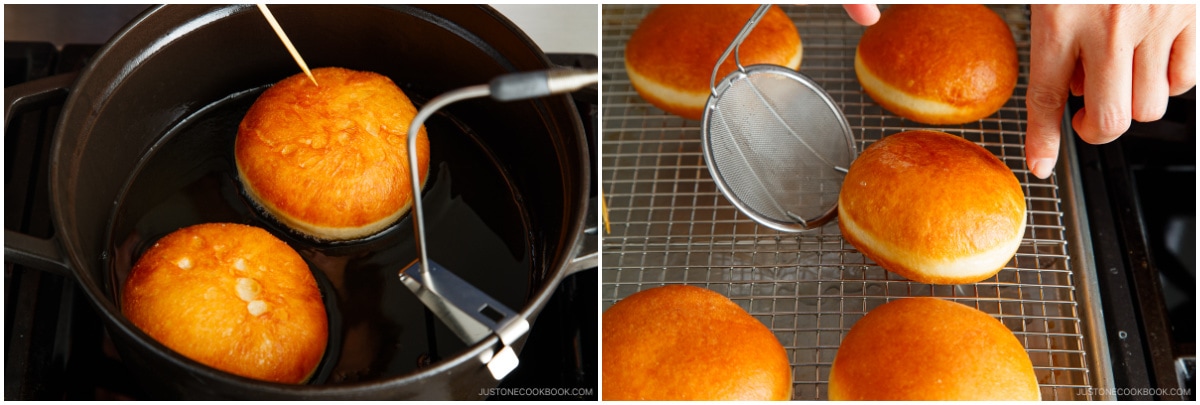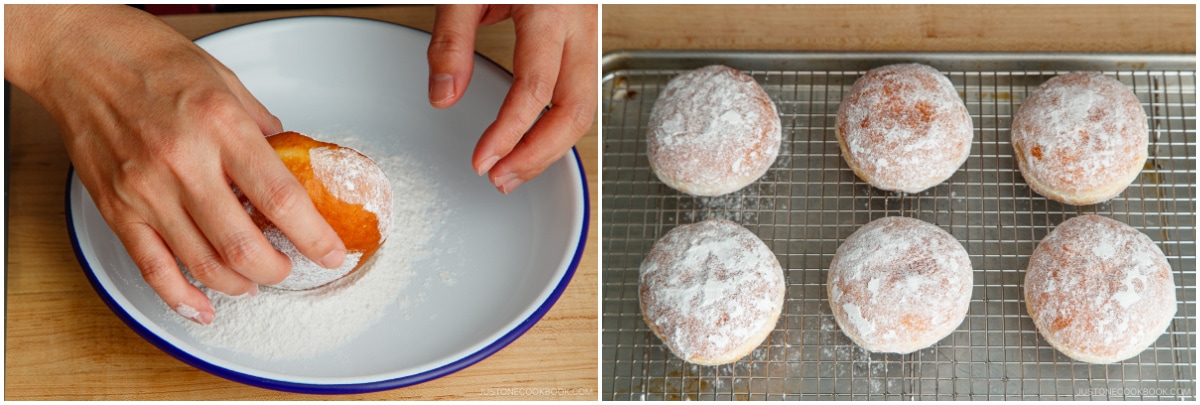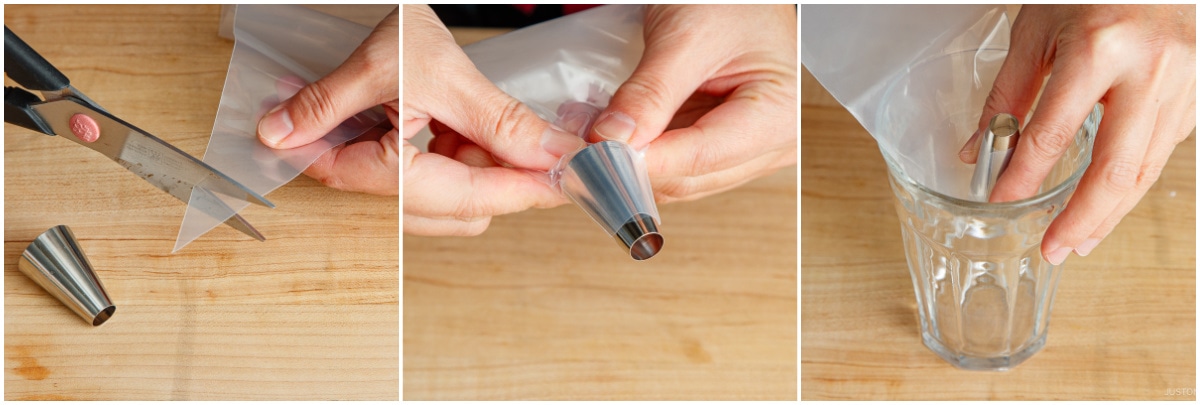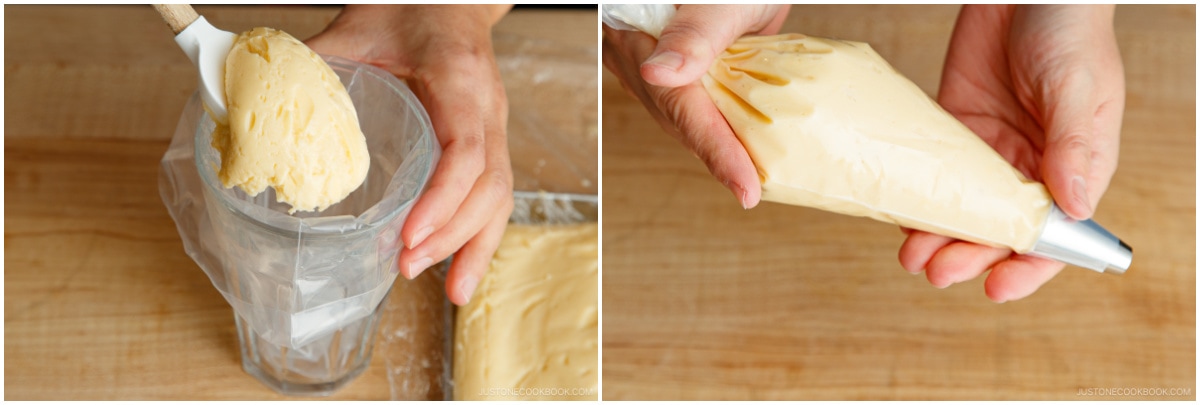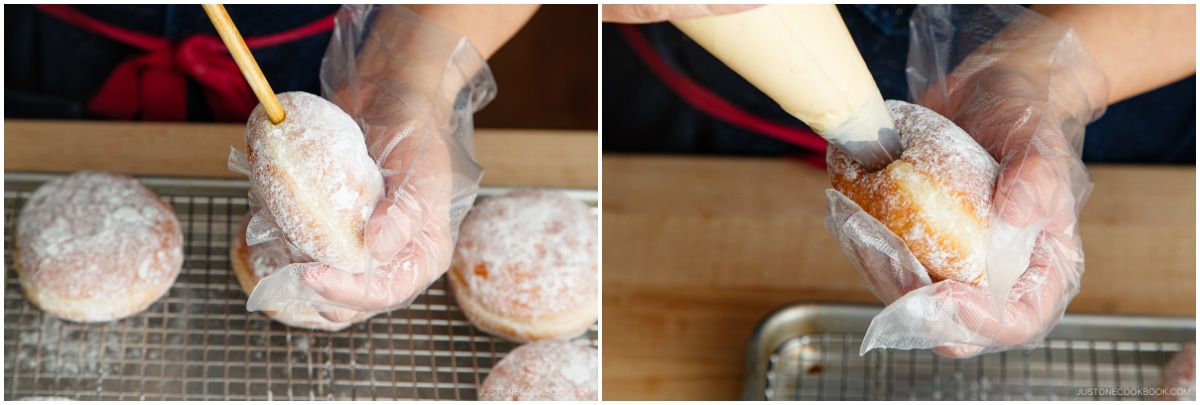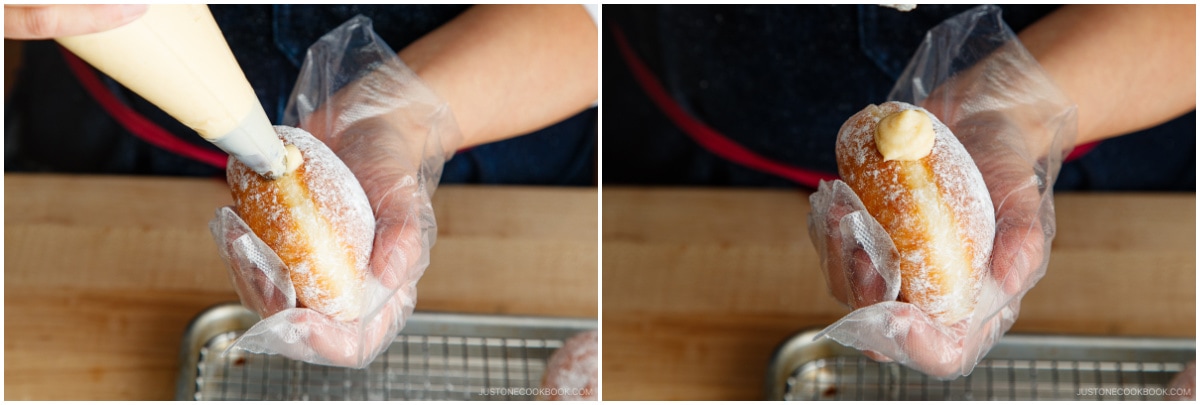Japan has always been known for its creative and delicious take on traditional confections, including donuts. One of the wildly popular Japanese-style donuts is the Pon de Ring Donuts (yes, I have a homemade recipe for that!) introduced by Mister Donuts, the beloved donut chain in the country. The creativity doesn’t stop there. In 2022, we witnessed the emergence of another new style donuts named Nama Donuts (生ドーナツ), making headlines in the food scene. Nama Donuts are phenomenal. They boast an unprecedented melt-in-your-mouth consistency and a pillowy-soft, cloud-like texture. My heart stops as I daydream about them. However, I can’t satisfy my donut cravings unless I hop on a flight back to Japan. Fortunately, I had the opportunity to learn how to make these donuts from my bread instructor, Mariko. Being sweet and generous, she also agreed to let me share her Nama Donuts recipe on Just One Cookbook. So, behold, donut fans—you’re going to fall in love with these little clouds of heaven!
What are Nama Donuts?
Nama Donuts (生ドーナツ) gained popularity in Japan when I’m donut ? opened its first store in Nakameguro, Tokyo, in March 2022. Run by Amam Dacotan, a popular bakery from Fukuoka, the donut shop offers nama, or fresh, donuts known for their fluffy, pillowy-soft, melt-in-the-mouth texture. Their fried brioche-style donuts are softer than typical donuts, and infused with kabocha squash for a puffier texture and a rich, tender crumb. You might notice that they look similar to light and fluffy Hawaiian donuts, Malasadas (actually, brought to Hawaii by Portuguese immigrants), which are rolled in granulated sugar and filled with tropical fruit-flavored custard or cream. However, I couldn’t find any information online regarding whether or not Nama Donuts are influenced by Malasadas. They certainly bear a resemblance to each other. I’m donut ? has only five locations in the whole country: Nakameguro, Shibuya, Harajuku, Omotesando (all in Tokyo), and Fukuoka (as of December 2023). There are long queues outside each store, but if you’re visiting Japan, it might be worthwhile to try the original Nama Donuts. But don’t worry, for those of us outside of Japan, we can still make our version of Nama Donuts at home! My bread instructor, Mariko, who taught us how to make Shokupan (Japanese Milk bread), is back! She taught me how to make her version of Nama Donuts. She’s been to I’m donut ?, and this recipe is close to their nama donuts!
Why You’ll Love This Recipe
SO AIRY, FLUFFY, SOFT…and OUT-OF-THIS-WORLD delicious! These are compelling reasons why you’ll want to make these donuts. Relatively easy to make. It’s true, even for those who don’t like working with yeast or deep-frying. I hope my recipe, with 120 step-by-step images and the video tutorial, will give you confidence! Don’t get overwhelmed by the instructions; they are there to ensure your success. This is your chance. 🙂
How to Make Nama Donuts
The Ingredients You’ll Need
whole milk (104ºF, 40ºC) – In the summertime when the kitchen is warm, use room temp or cold milk. active dry yeast – I use this brand. DO NOT use old yeast that‘s more than 6 months old. Also, DO NOT use instant dry yeast for this recipe, unless it’s Saf instant yeast gold (remember, it’s gold packaging, not red one). This recipe has more sugar in the dough, and regular instant yeast is not as effective as active dry yeast or Saf instant yeast gold. egg sugar Diamond Crystal kosher salt sweetened condensed milk – The “original” ingredient used for I’m donut ?‘s dough is kabocha paste. Since not everyone can find kabocha overseas, my bread instructor uses sweetened condensed milk to replace kabocha. bread flour – I use King Arthur Bread Flour. Their bread flour has 12.7% protein — a whole point higher than other national brands. unsalted butter oil for deep frying – I use Safflower Oil. You will need at least 1 inch (2.5 cm) deep in the deep frying pot. confectioners’ sugar (powdered sugar) (for dusting; I’m donut ? uses powdered sugar instead of granulated sugar) Custard (pastry) cream: egg yolks, whole milk, sugar, pure vanilla extract (or vanilla beans), cake flour (you can make your own cake flour), unsalted butter
The Cooking Steps
Recipe Tips and Techniques
Measure the ingredients with a kitchen scale. To set yourself up for success, I only provide metrics. It’s easier to troubleshoot when we know you measured the ingredients precisely. I highly recommend a kitchen scale in your kitchen (this is my favorite scale).
Be sure that the ingredients are at the right temperature! Yeast is a living thing and will not activate if the environment is too cold due to the cold milk, egg, and butter. On the contrary, the yeast could die if the environment is too warm, yielding dough that doesn’t rise.
Knead the dough on Speed 8. KitchenAid does not recommend kneading dough at settings higher than Speed 2. However, we can’t achieve a perfect texture without kneading aggressively. If you are doubling the recipe, you may want to knead on Speed 6.
Slam and roll until your dough has a smooth, taut skin. I’ve explained how to do this step with images in the recipe card.
The first proof requires about 1 hour, or until the dough is tripled. Halfway through, reshape the dough for a stronger texture.
The final proof requires about 40-50 minutes, or until the dough is doubled.
Deep fry 2-3 donuts at a time to avoid a sudden temperature drop in the oil. Maintaining the ideal oil temperature throughout deep frying is important.
Fill the donuts with custard cream just prior to serving. Keep the custard cream in the refrigerator, but do not refrigerate the donuts as they may become hard.
Storage Tips
To Store. Enjoy the Nama Donuts on the same day you make them. You can keep the unfilled donuts in an airtight container at room temperature for a day. Fill the donuts with custard cream just prior to serving. Store the homemade custard filling for up to 2-3 days in the refrigerator. To prevent a film from forming, place a piece of plastic wrap on top of the custard. To Freeze. You can keep the unfilled donuts in an airtight container or resealable freezer bag and freeze for up to 1 month. Defrost in the refrigerator overnight.
Recommended Tools to Make This Recipe
KitchenAid Stand Mixer (Artisan Series) (with C-dough hook) a digital kitchen scale a medium bowl a dough scraper a dredge shaker a whisk two half-sheet baking sheets a wire rack a heavy-bottomed pot (I use this 2.75-quart Staub Cast Iron Round Cocotte) or a deep-fryer a deep-fry thermometer, such as the Thermoworks Chef’s Alarm a fine-mesh sieve a bamboo skewer a chopstick a pastry bag with a piping tip
How long does it take for the dough to rise?
It depends. Different factors can affect the proofing time of your dough, such as:
the temperature and humidity of your kitchen the freshness of your yeast the milk temperature.
In a warm kitchen, your dough may proof in 40-60 minutes, while it can take 2-3 hours in a cold kitchen. It’s essential to create a nice, toasty environment for your dough to rise.
How do I get the dough to rise faster?
Find a good spot where it’s nice and warm. Heat rises, so some people proof their dough on top of a running dryer machine or top of the refrigerator. My recommendation is to use an oven. Place a baking pan/dish of boiling water on a lower rack and place the bowl with dough on an upper rack. Sometimes, it gets nice and warm, even with just the light on. You can also use a microwave and place a dish of boiling water inside the microwave.
Why is my dough not rising?
Possibly out of these reasons:
Your yeast was old. (This has happened to me before!) Yeast is a microorganism, and it goes bad. Don’t waste the rest of your ingredients because of old yeast. Get brand-new yeast (and make sure it’s a good batch from the store!) Hot milk killed the yeast. Read the instructions on your yeast package. Generally, the warm water/milk temperature should be between 105ºF (40ºC) and 115ºF (46ºC) degrees. Too much salt/sugar/flour. Did you measure your ingredients with a kitchen scale? The dough was too dry. Did you cover the dough with plastic wrap? If you used a damp towel, did it dry up? The dough should be moist and elastic during proofing. Be careful not to develop a crust on the dough’s surface to prevent it from rising further. The dough was too cold. The yeast is most active at around 86-95°F (30-35°C) degrees. See my recommendation above to create a warm environment for the dough.
Can I knead the dough with my hands?
The dough is very wet and sticky, but you can knead it with your hands (though it requires a lot of arm work). Using a silicone mat and a pastry card, try not to introduce more flour.
Try Other Japanese Sweets
Donuts – Pon de Ring Donuts, Matcha Donuts, Okinawan Sata Andagi Doughnuts Cakes – Japanese Souffle Cheesecake, Strawberry Shortcake, Chocolate Gateau Cookies – Miso Butter Cookies, Black Sesame Cookies, Matcha Cookies
Wish to learn more about Japanese cooking? Sign up for our free newsletter to receive cooking tips & recipe updates! And stay in touch with me on Facebook, Pinterest, YouTube, and Instagram. <<在米25年のライフコーチ。だから頼れる。>>こんな方のためのコーチングです。 ・アメリカ生活の不便や不安を解消し、なるべく早く生活になじみたい。・自由な発想を持つ、自己肯定感の高い幸せな子供を育てたい。・パートナーに頼らず、自分で自分を幸せにできるようになりたい。・もやもやを解消し、笑顔で日々を過ごしたい。・アメリカ生活で得られる体験を活かし、家族にとってのより良い未来を築きたい。・日本人が知らない文化の違いを知り、スムーズな人間関係を築きたい。・実は多くの人が知らないまま!アメリカの学校システムについて知りたい。・自己肯定感を上げ、ぶれない自分になりたい。・困った時に頼れる相談相手が欲しい。・日本とアメリカの他拠点生活について知りたい。
